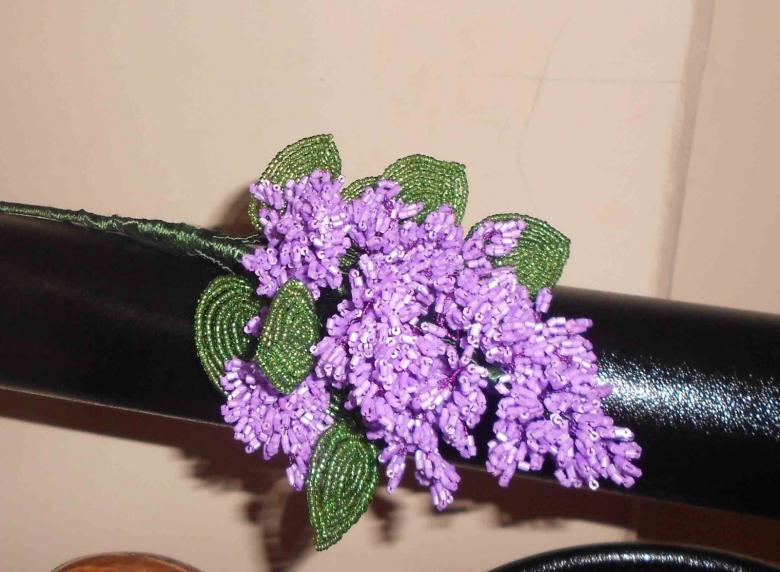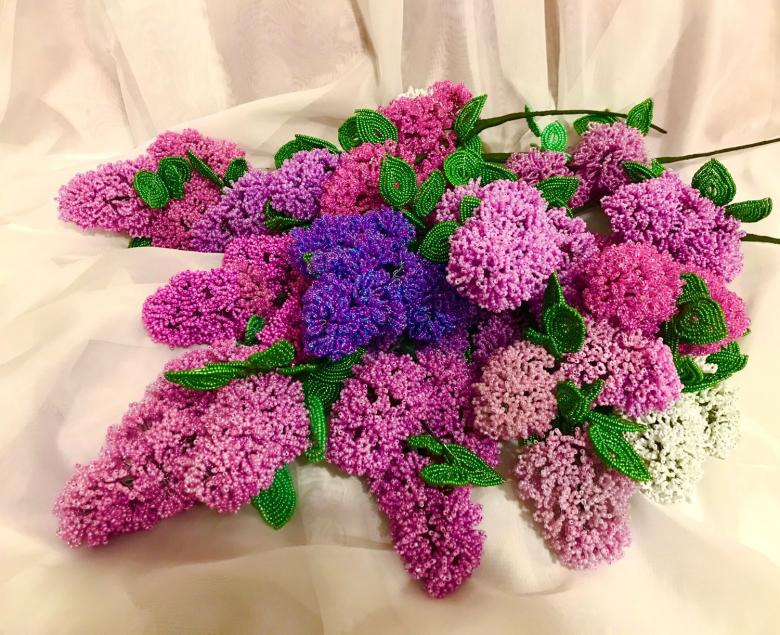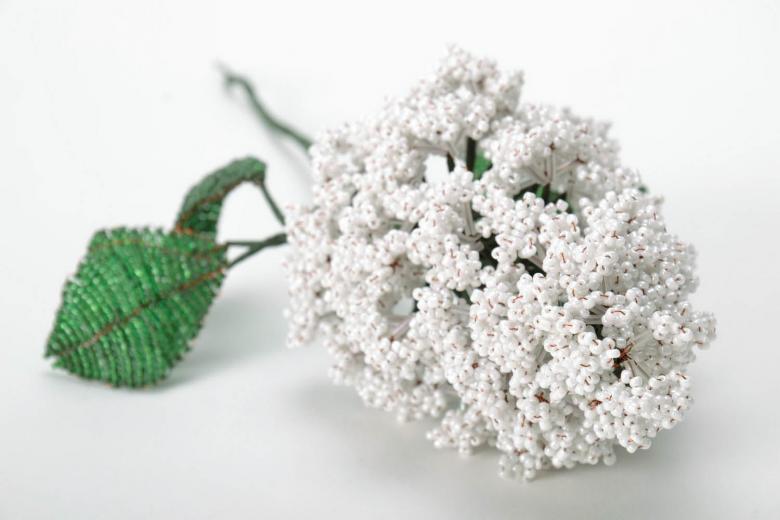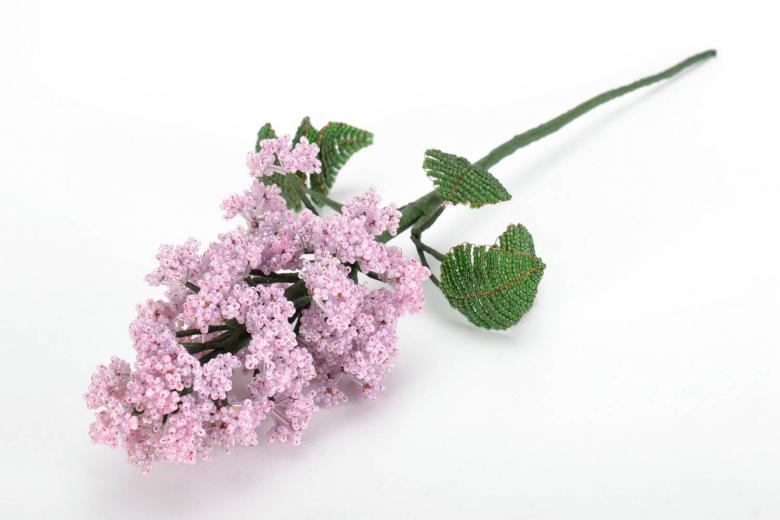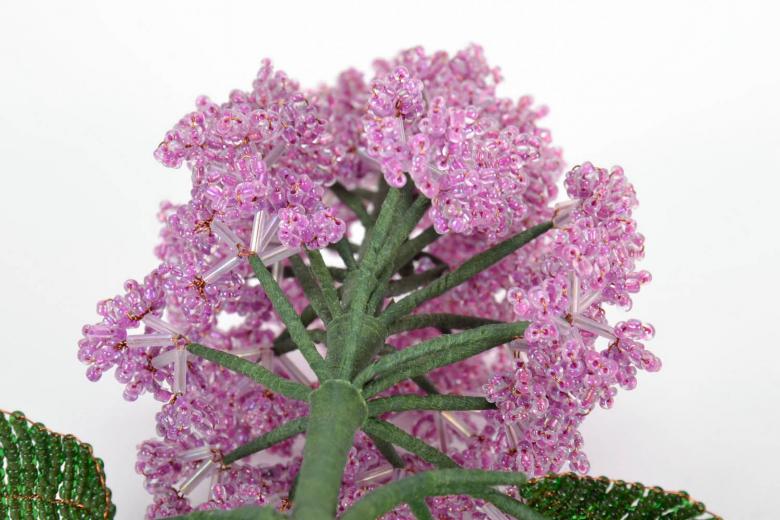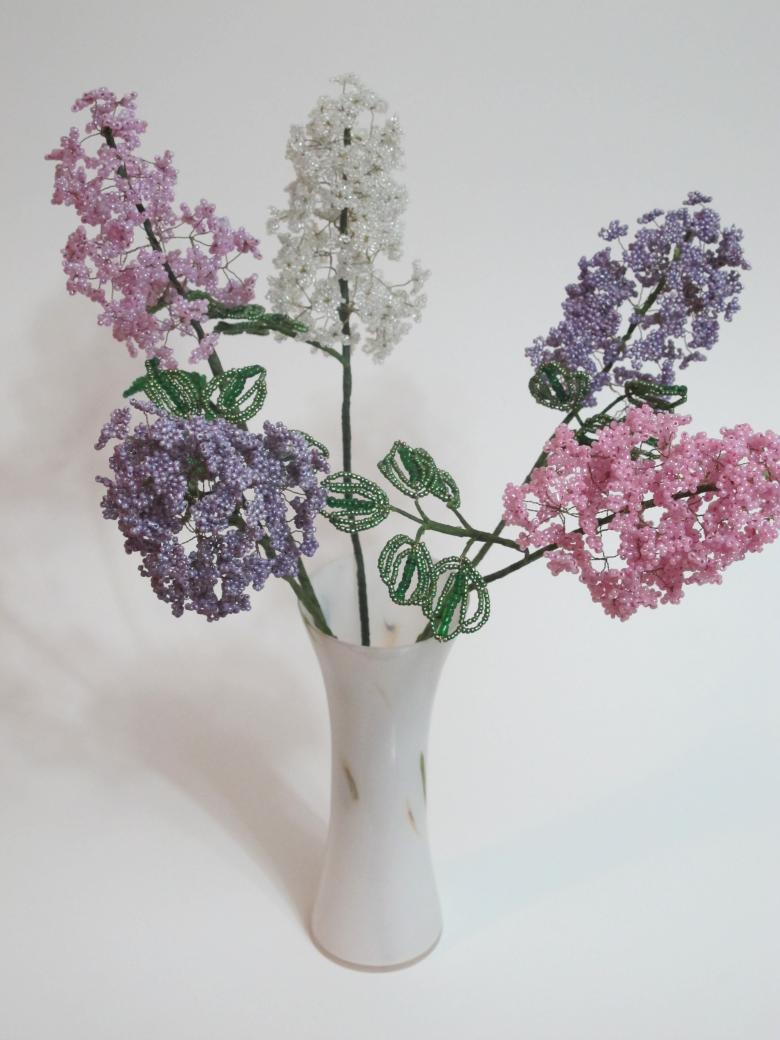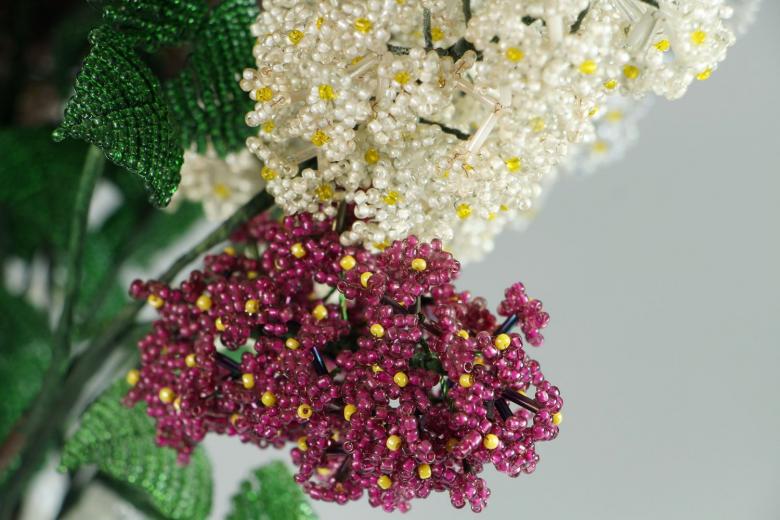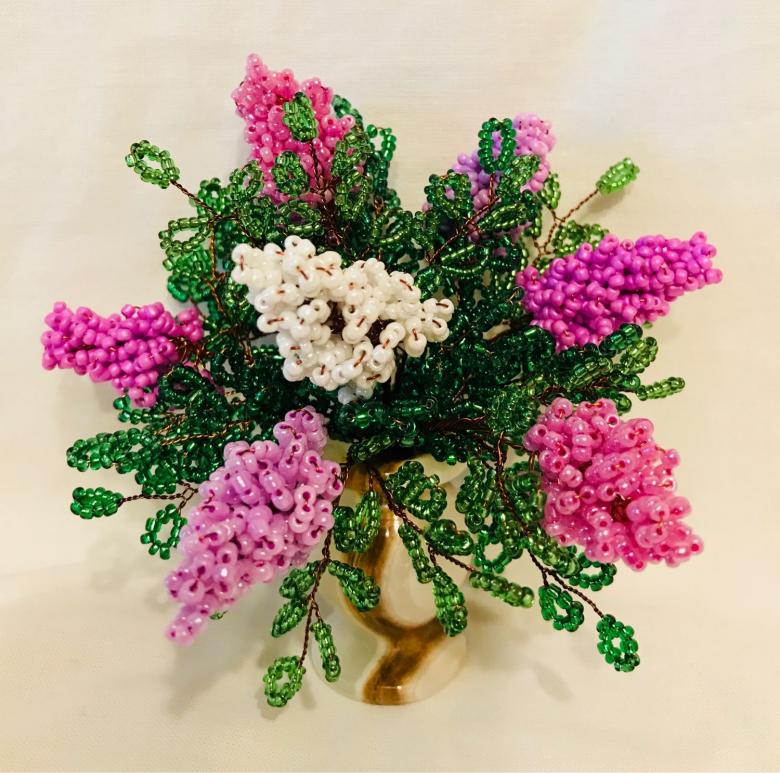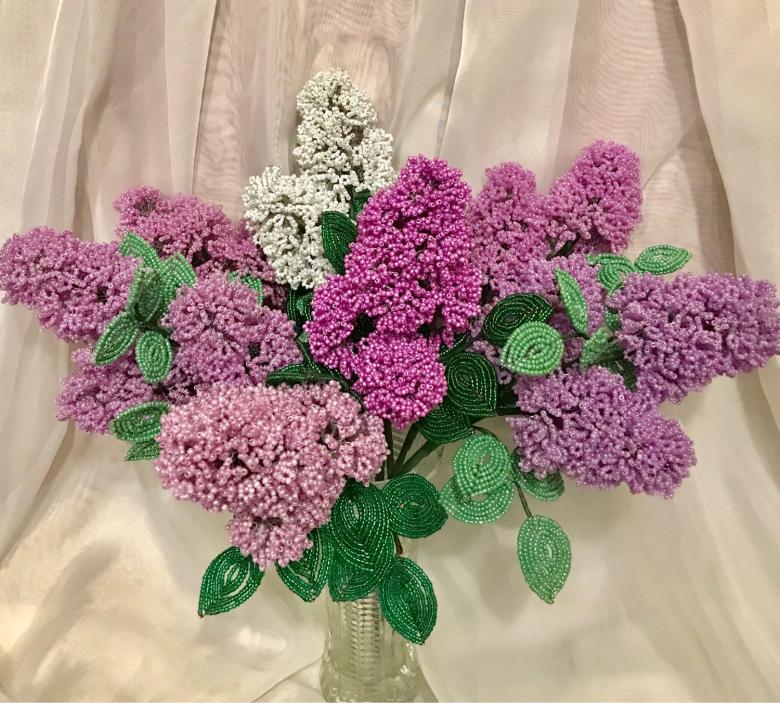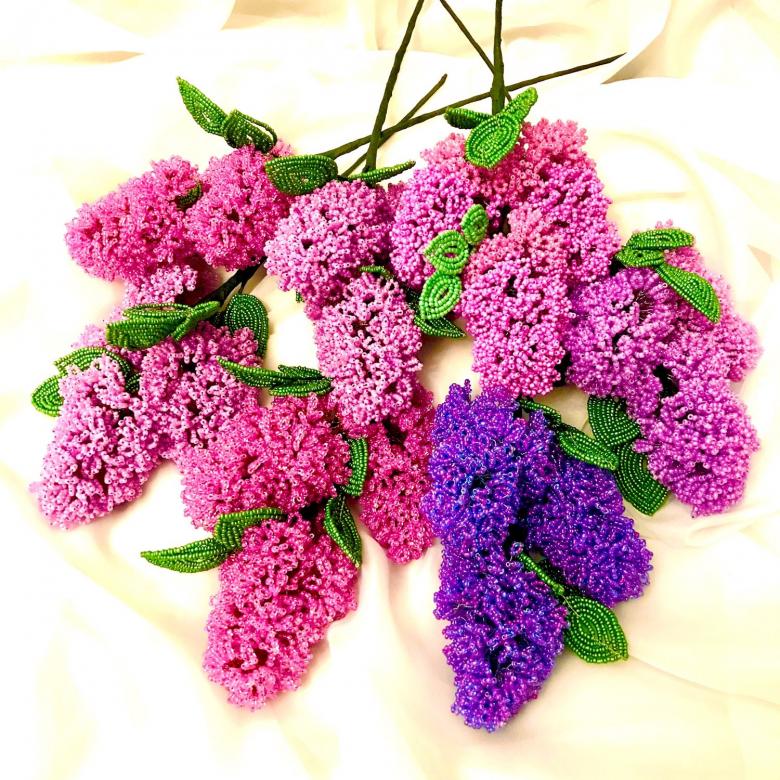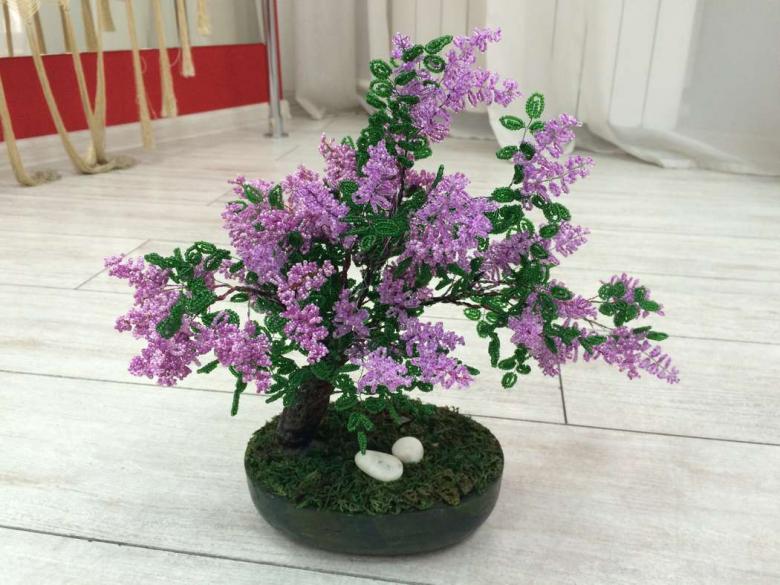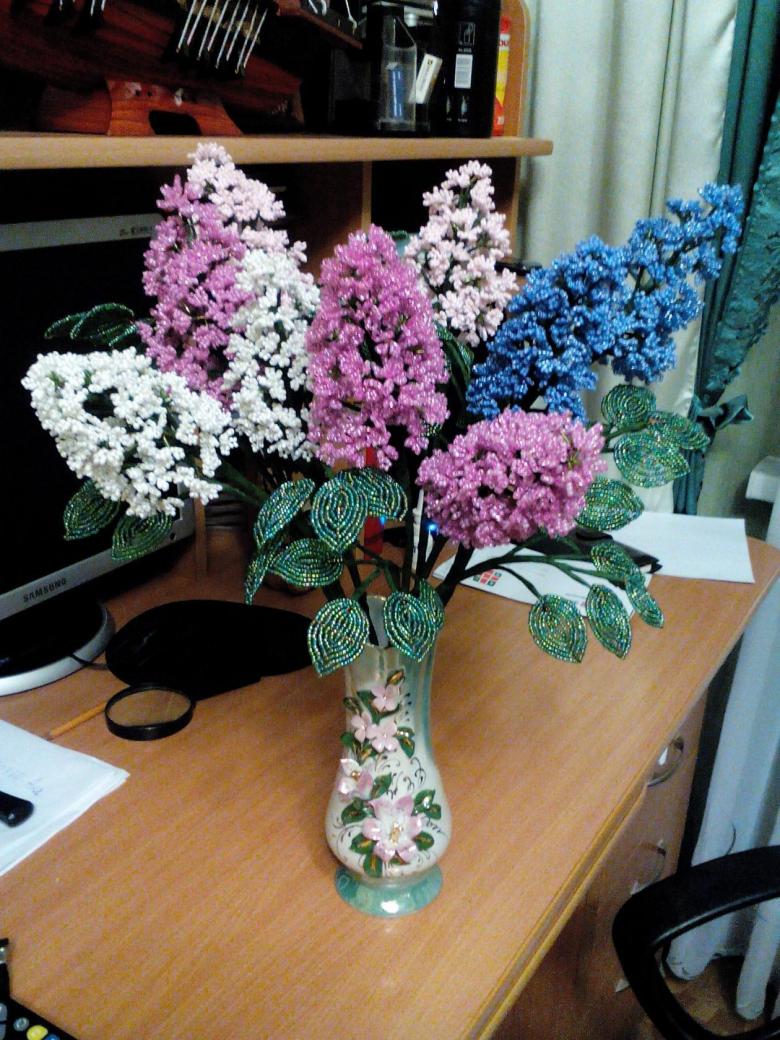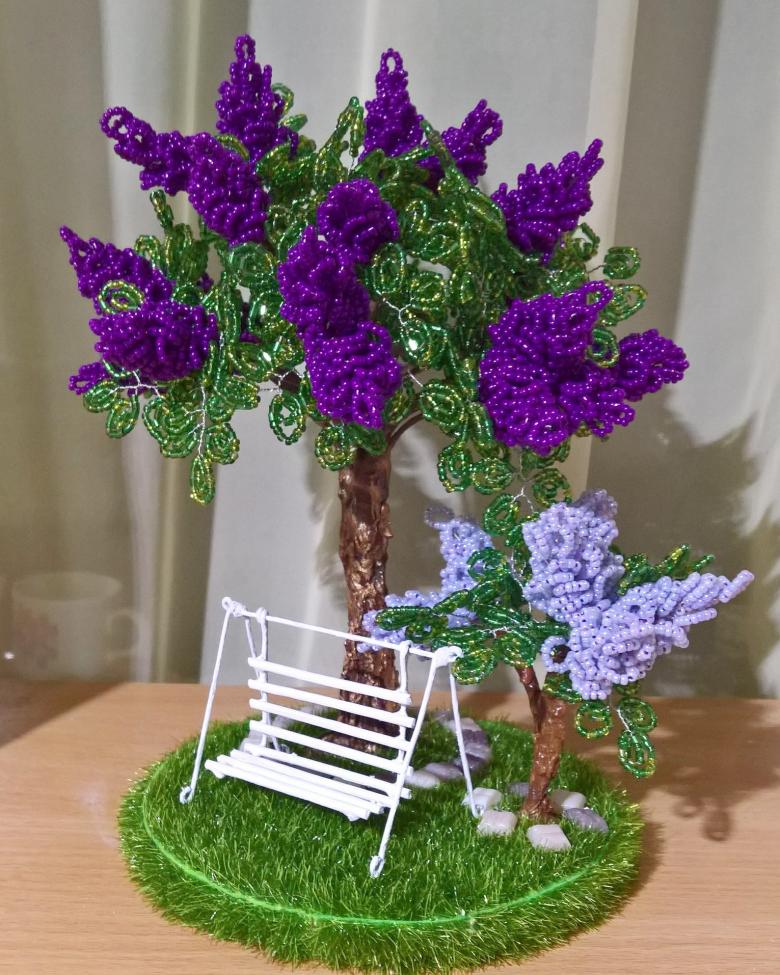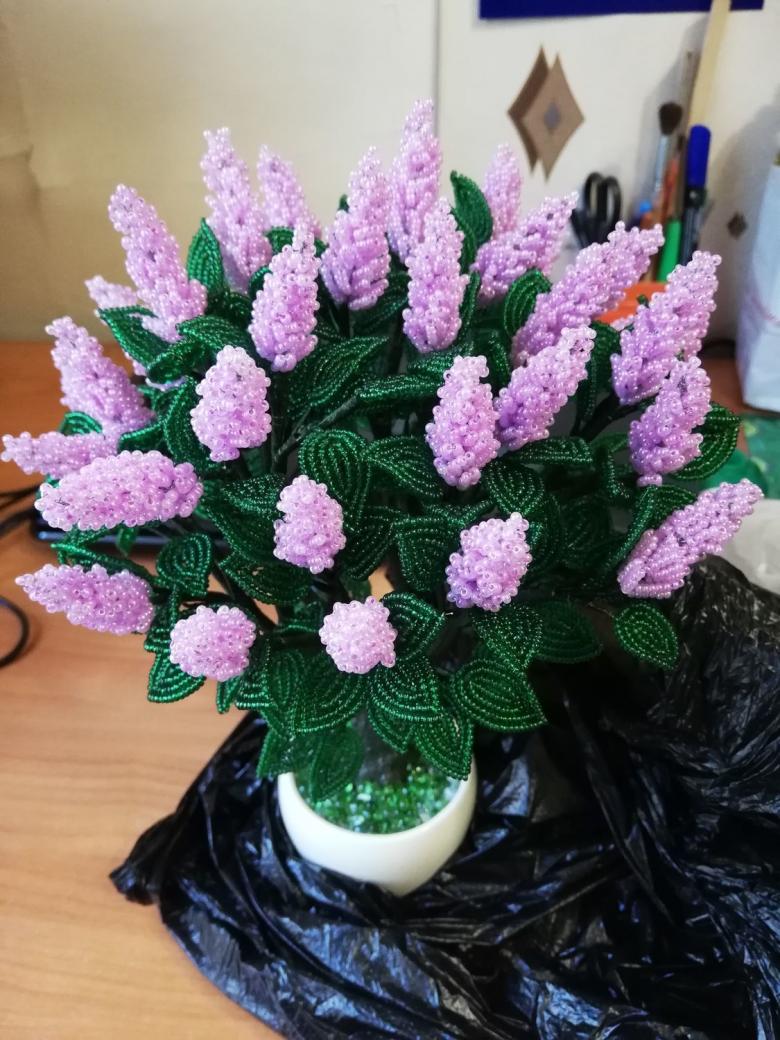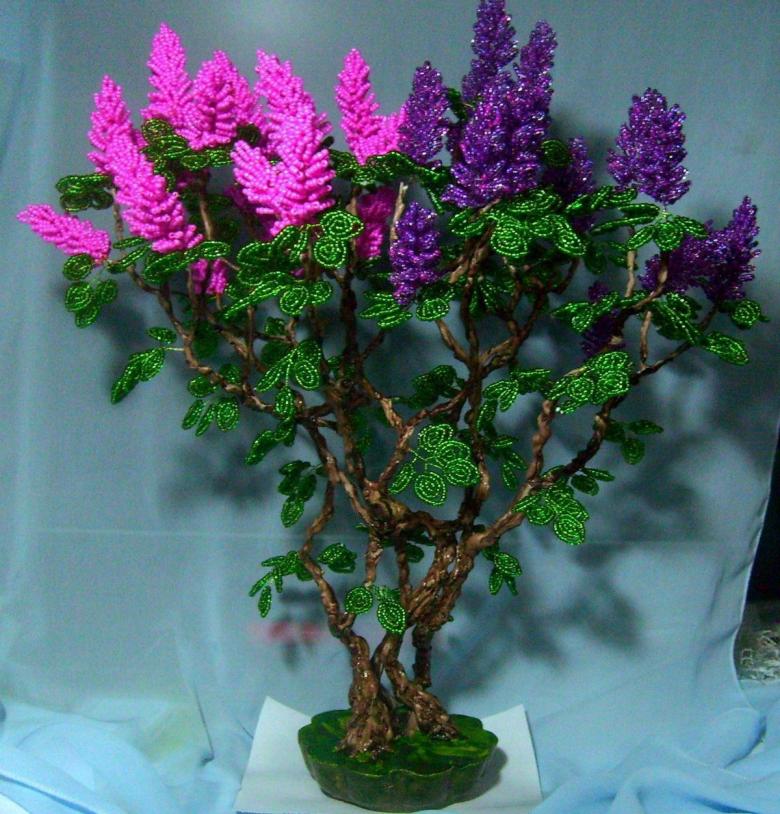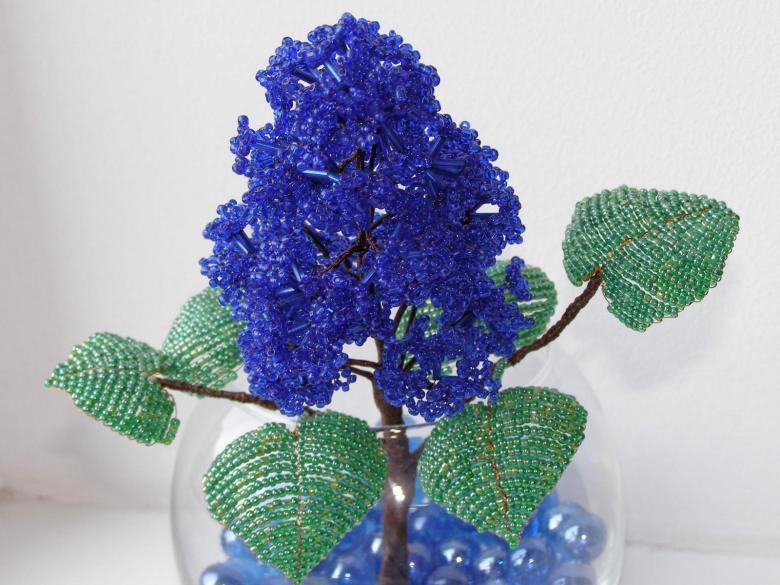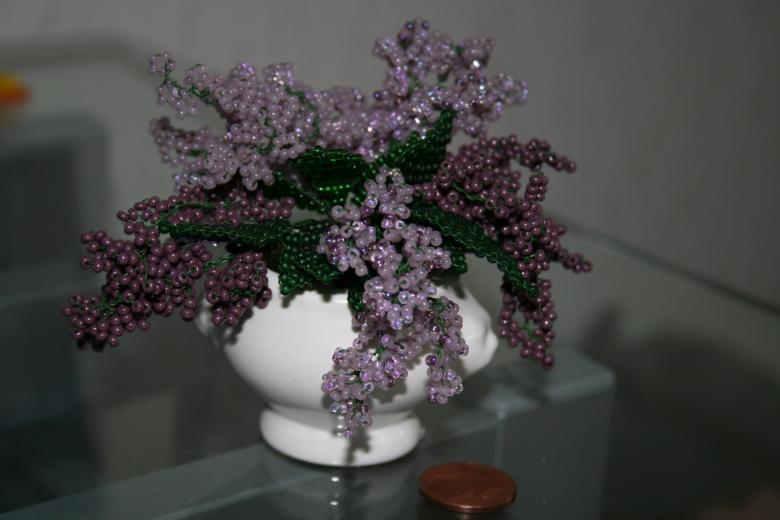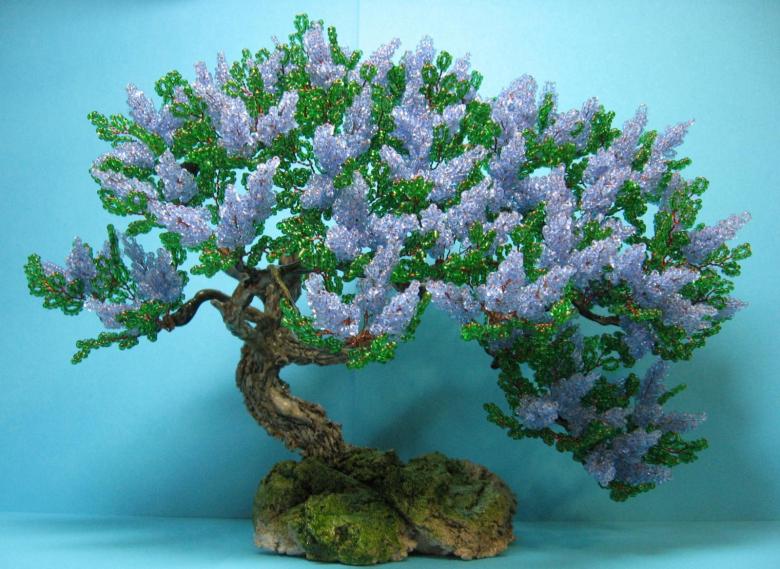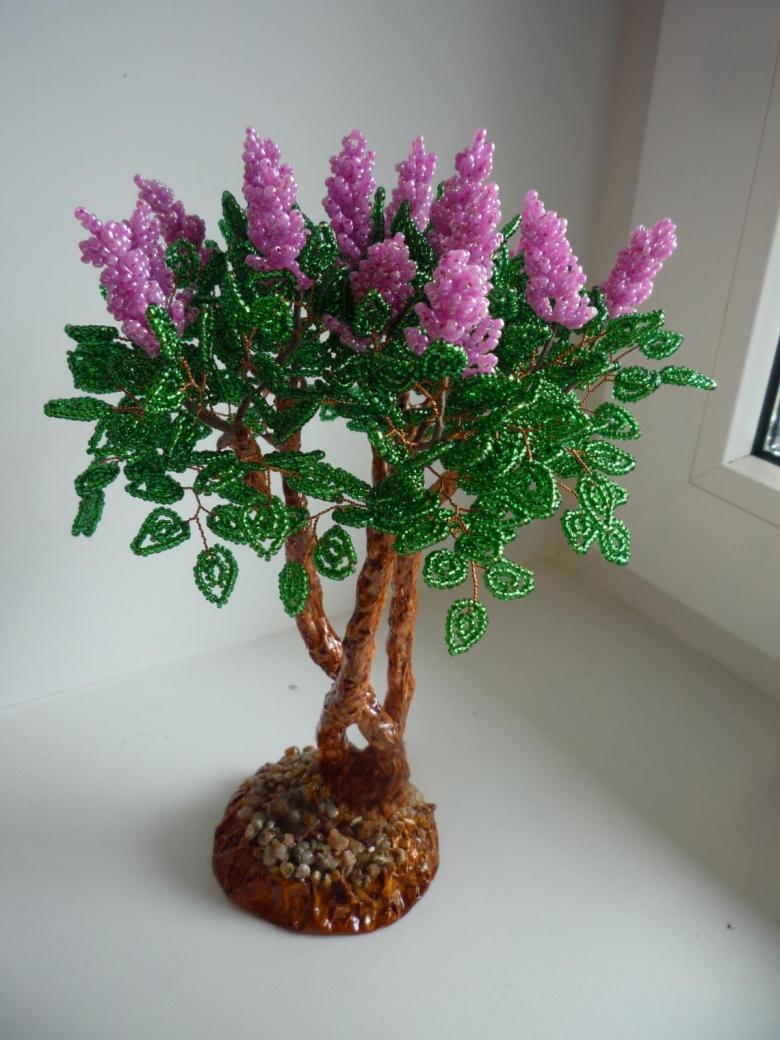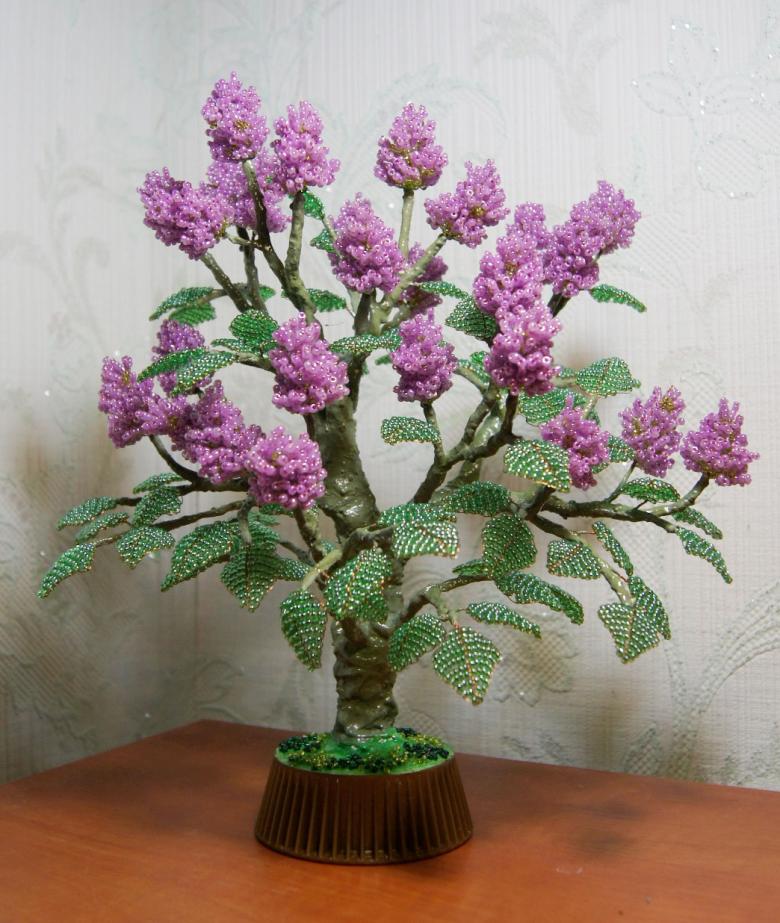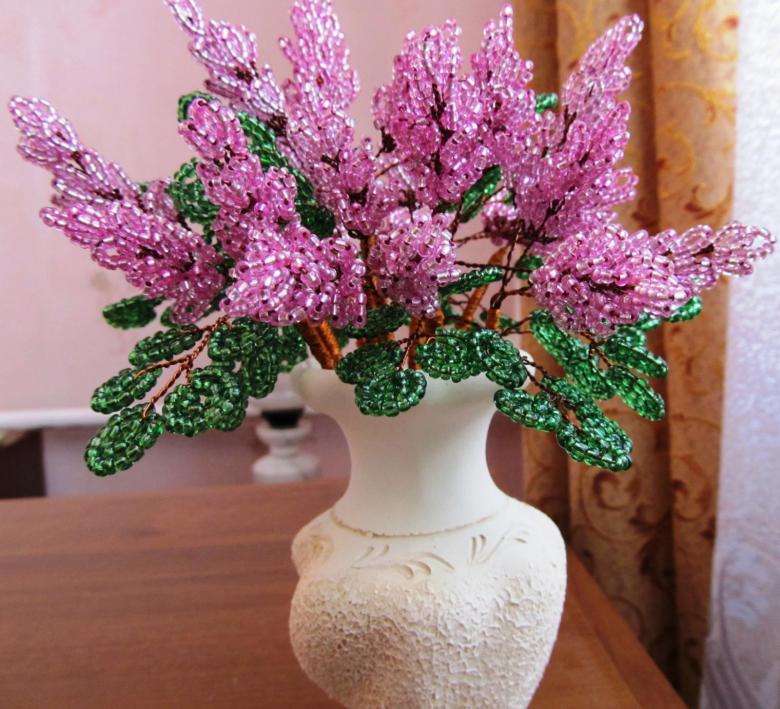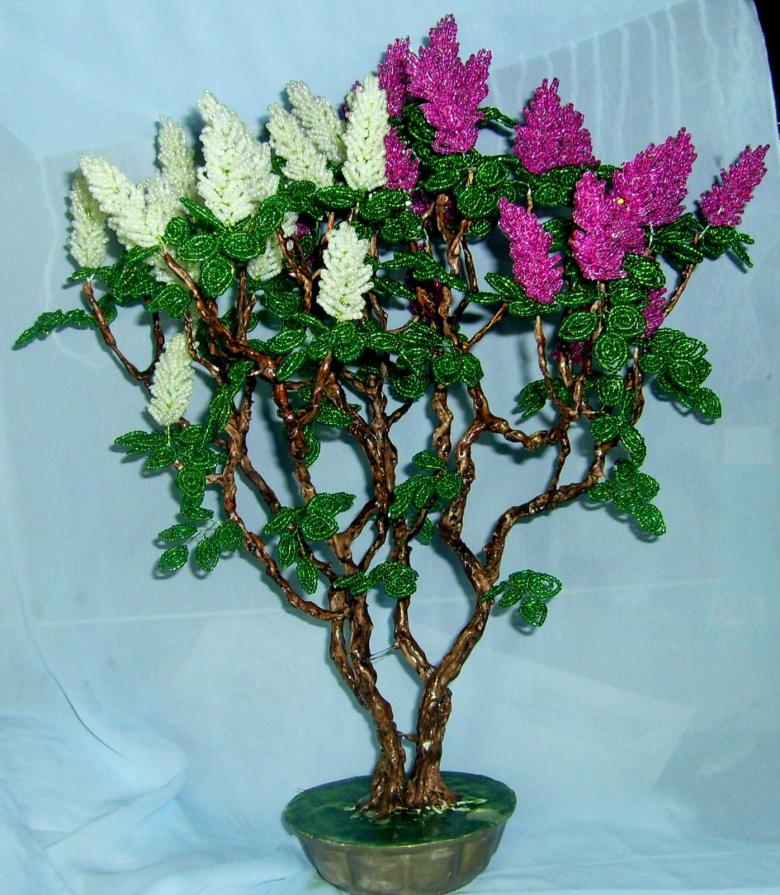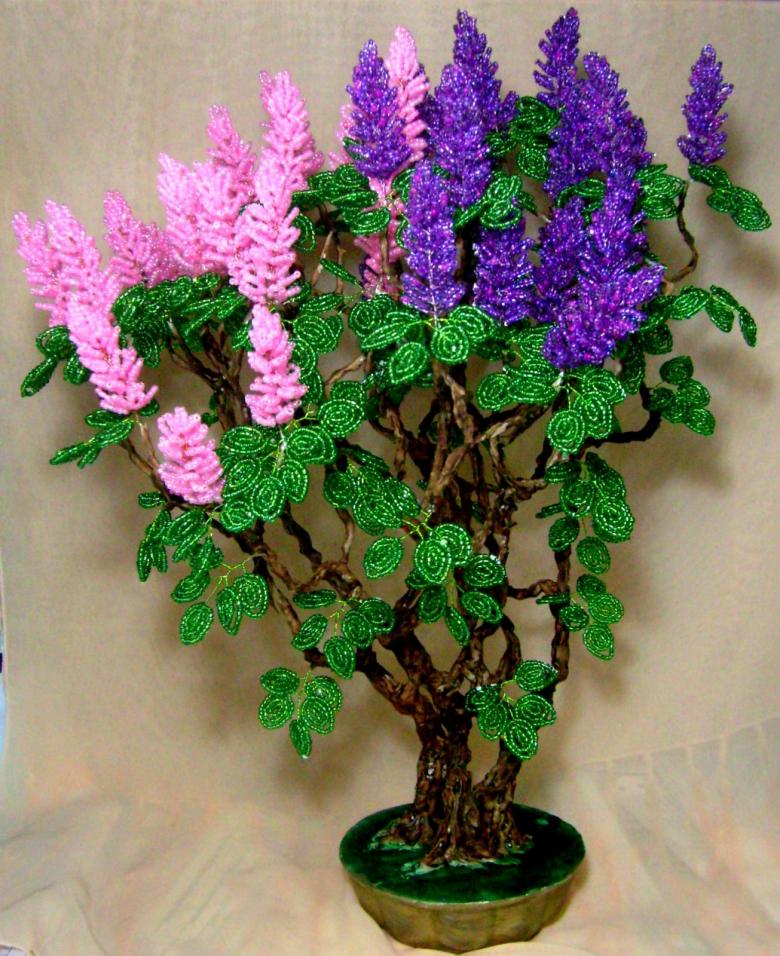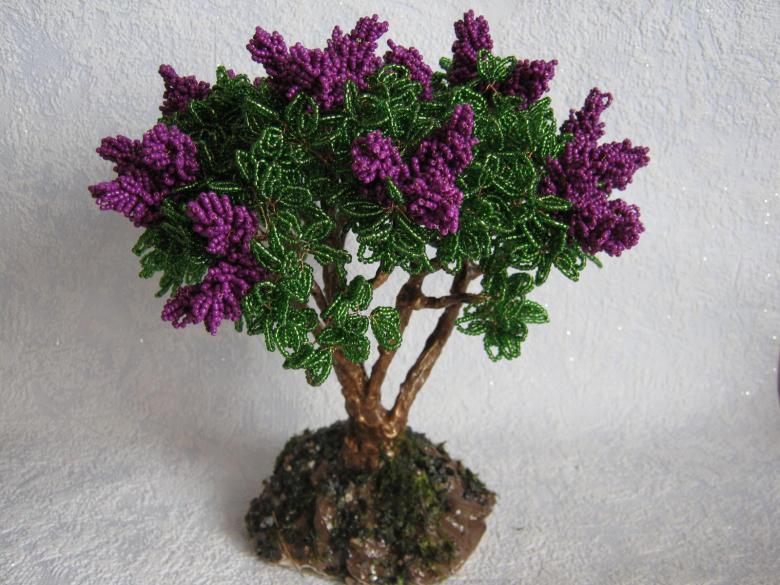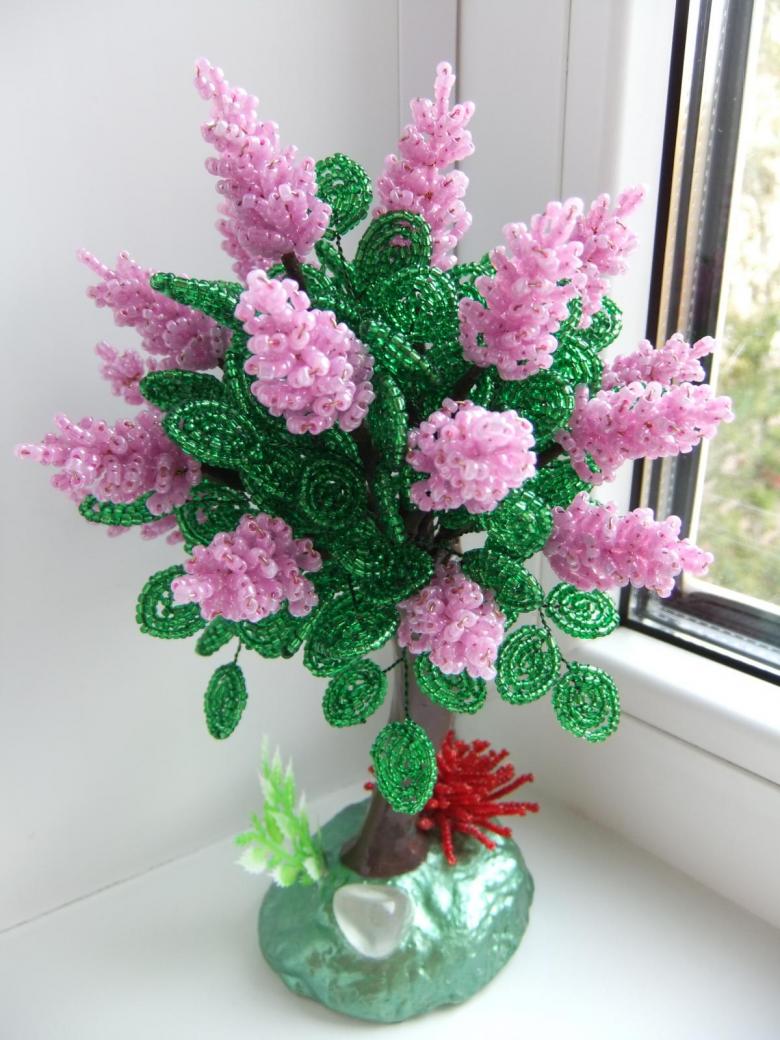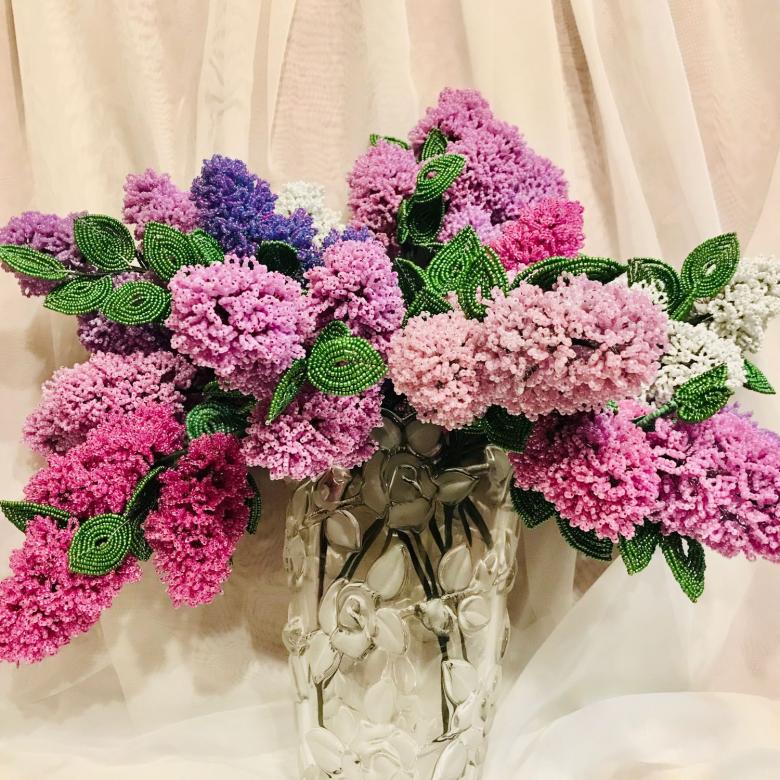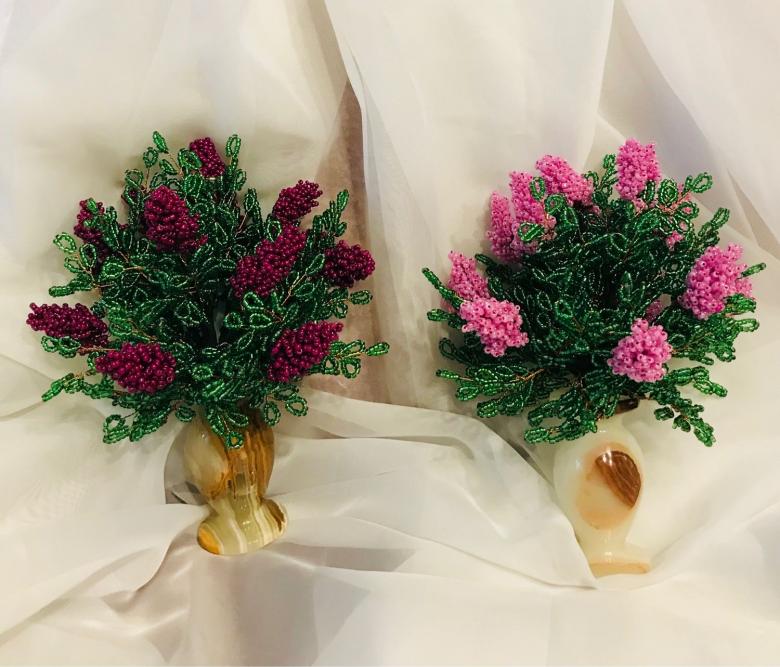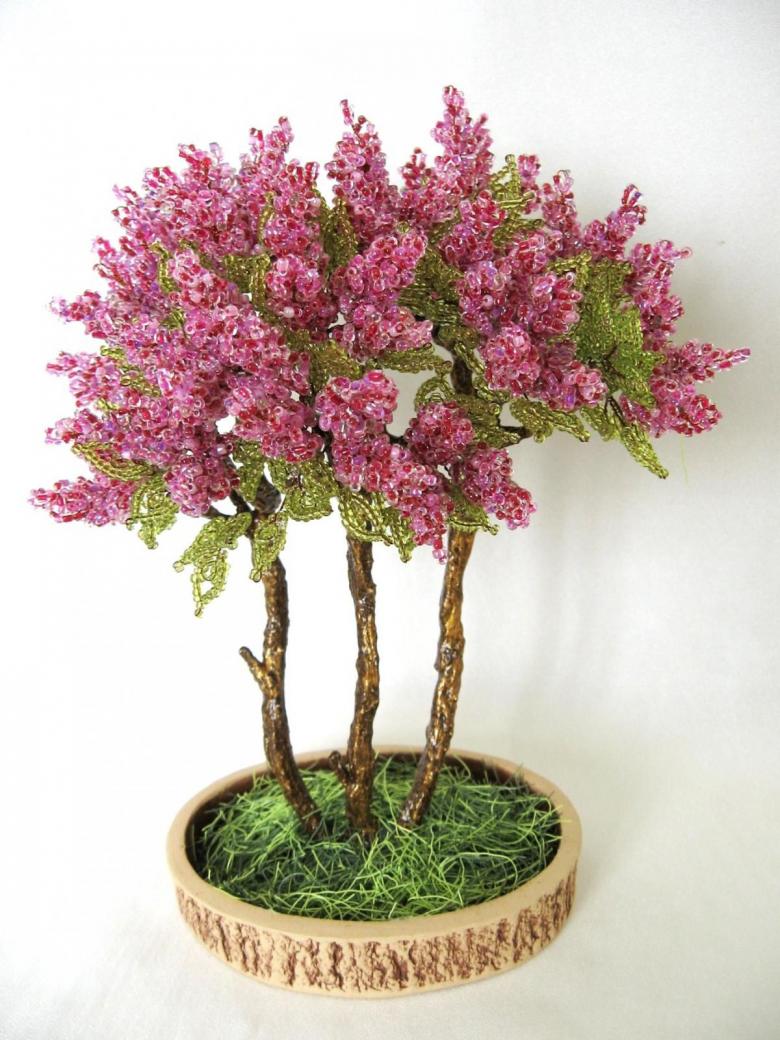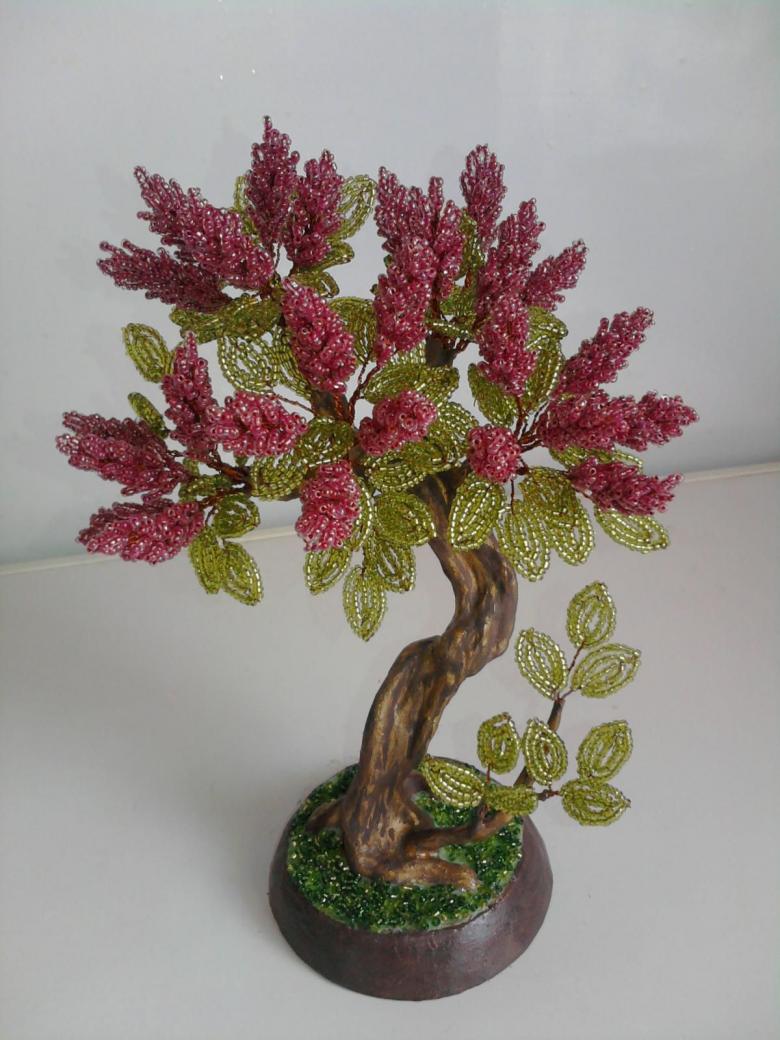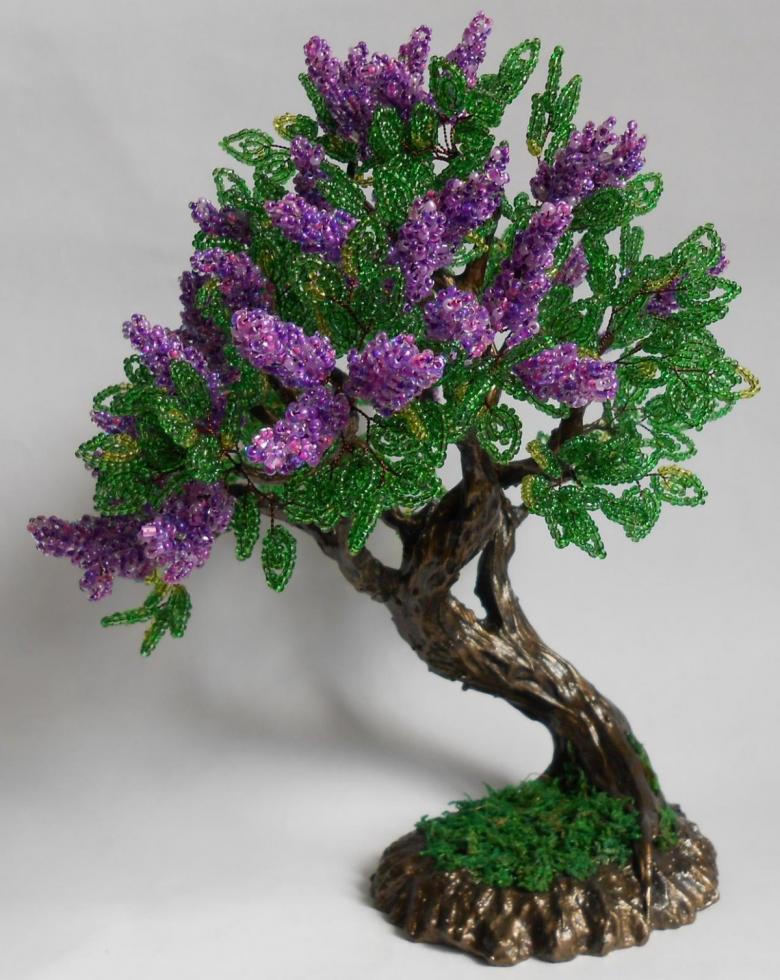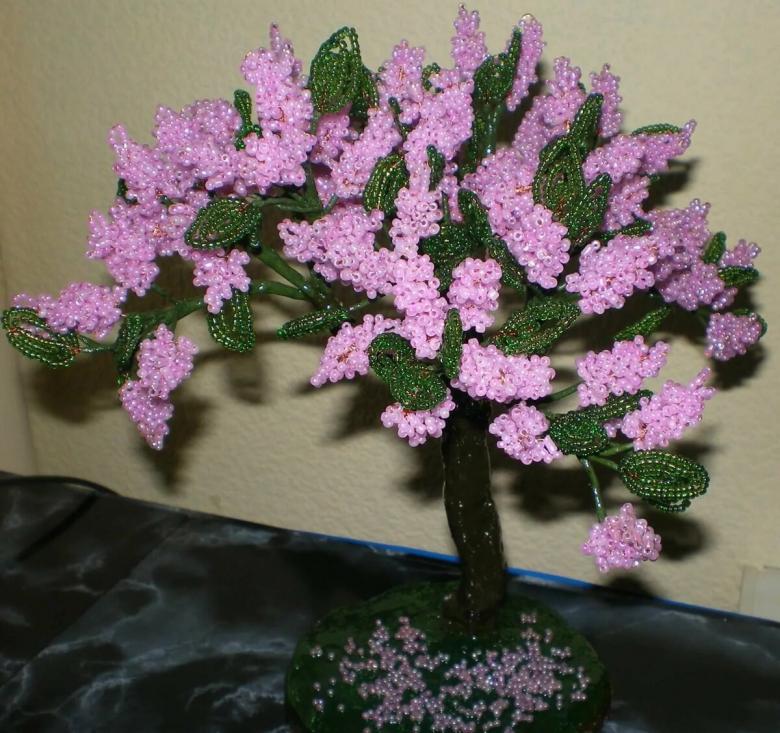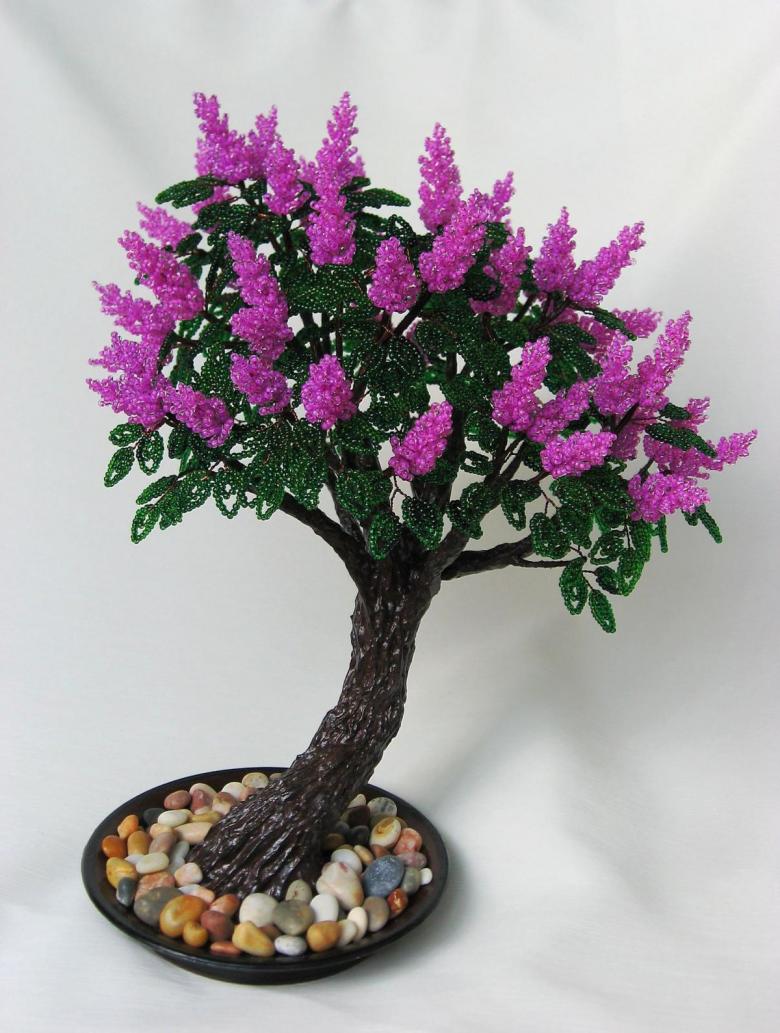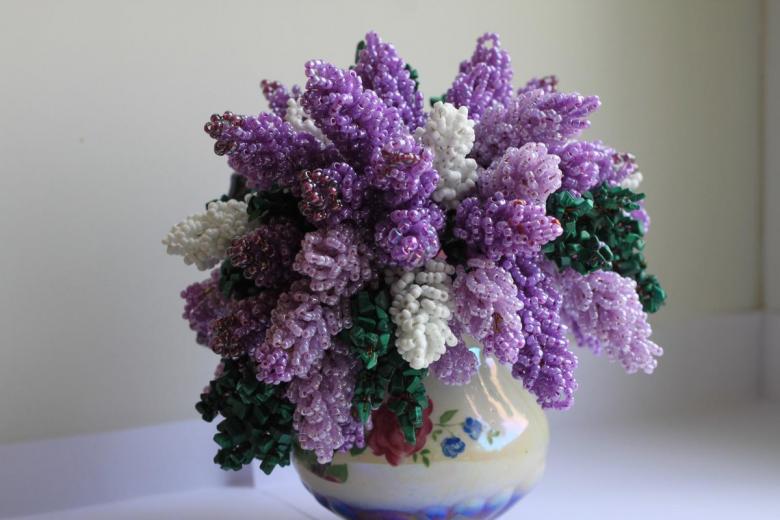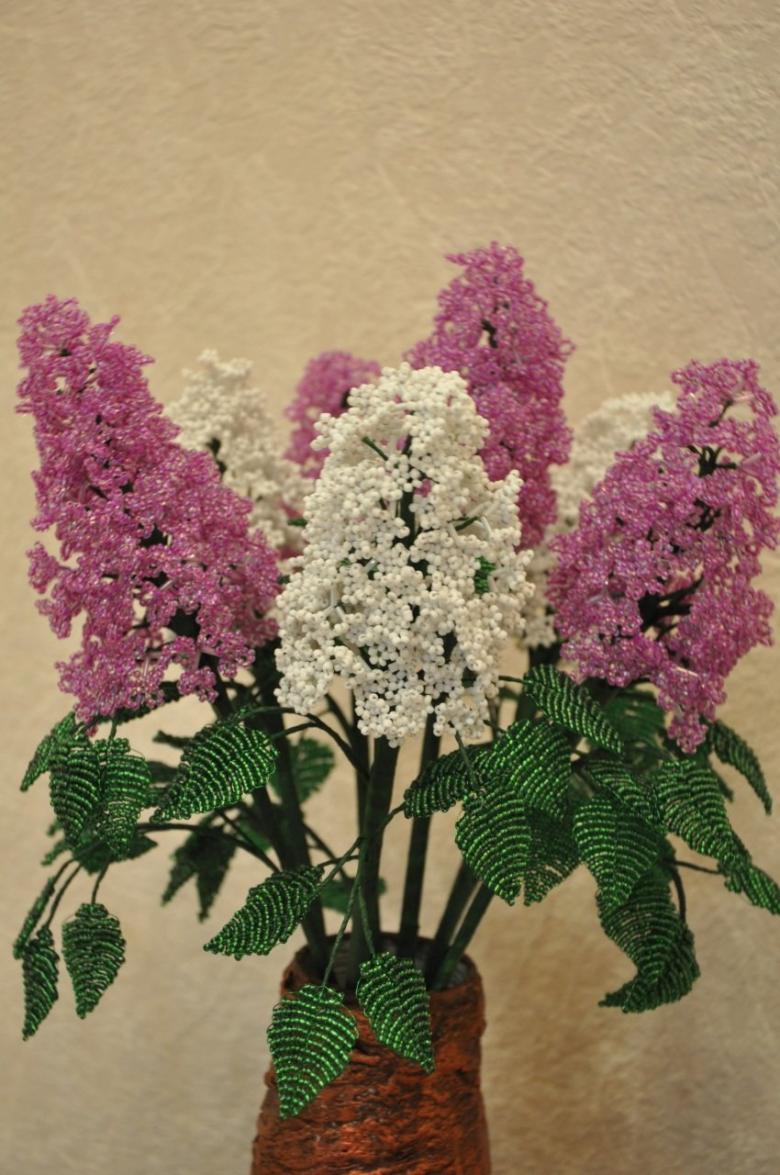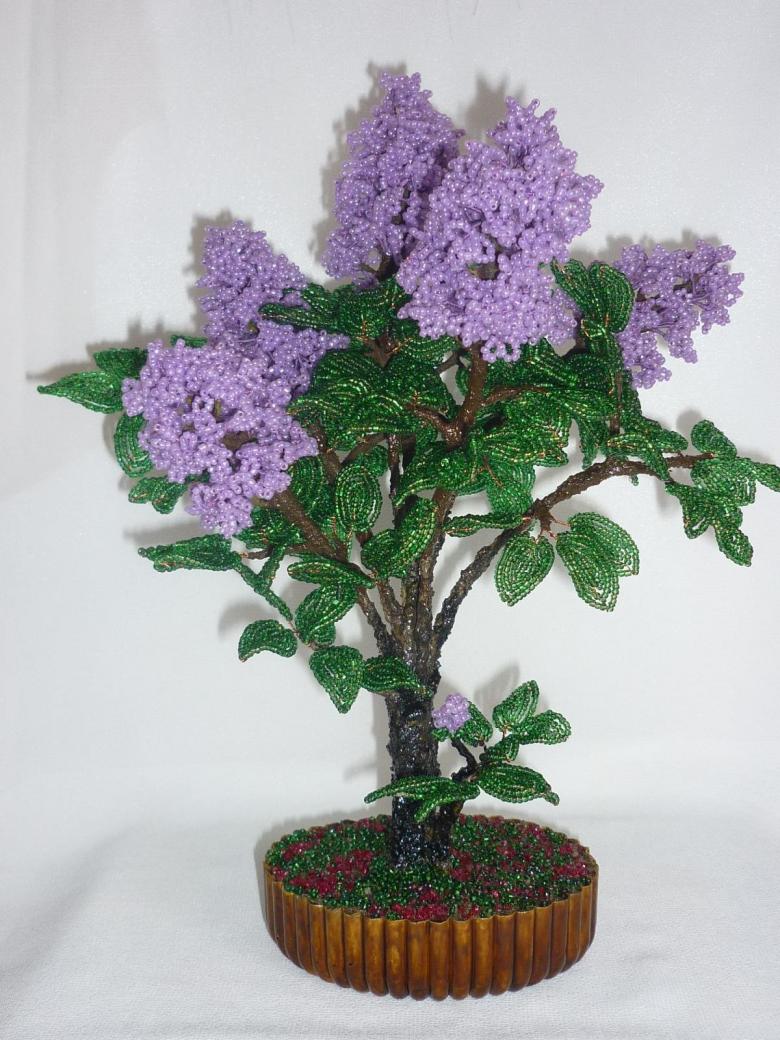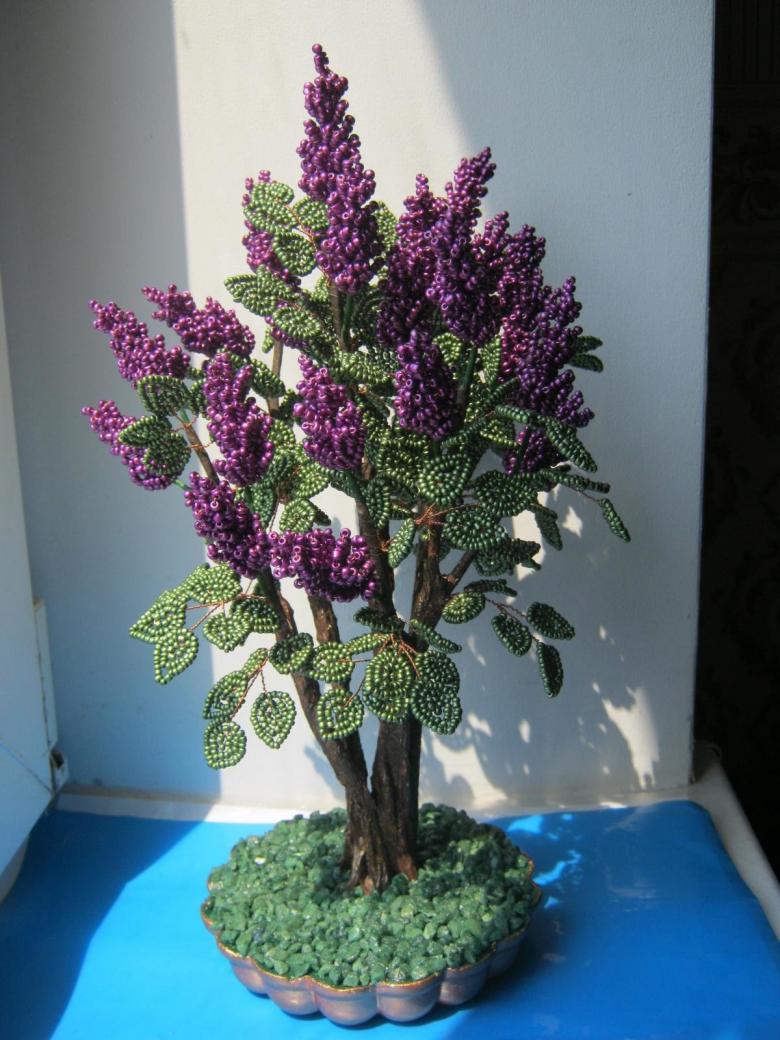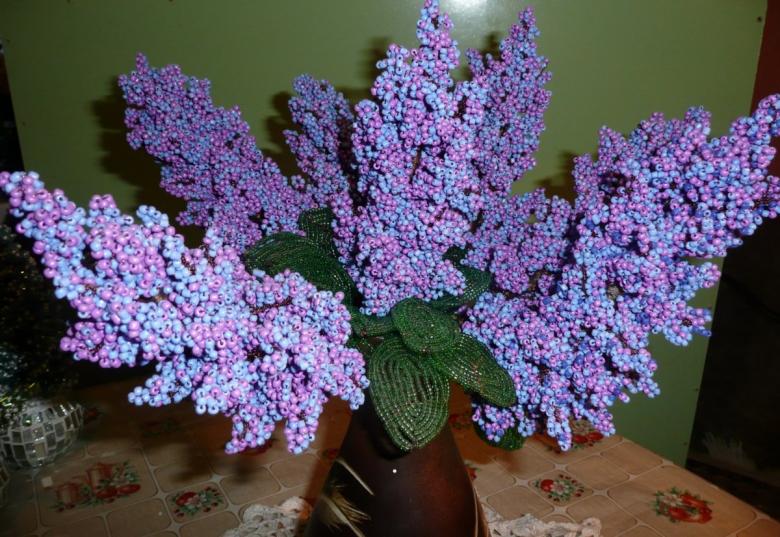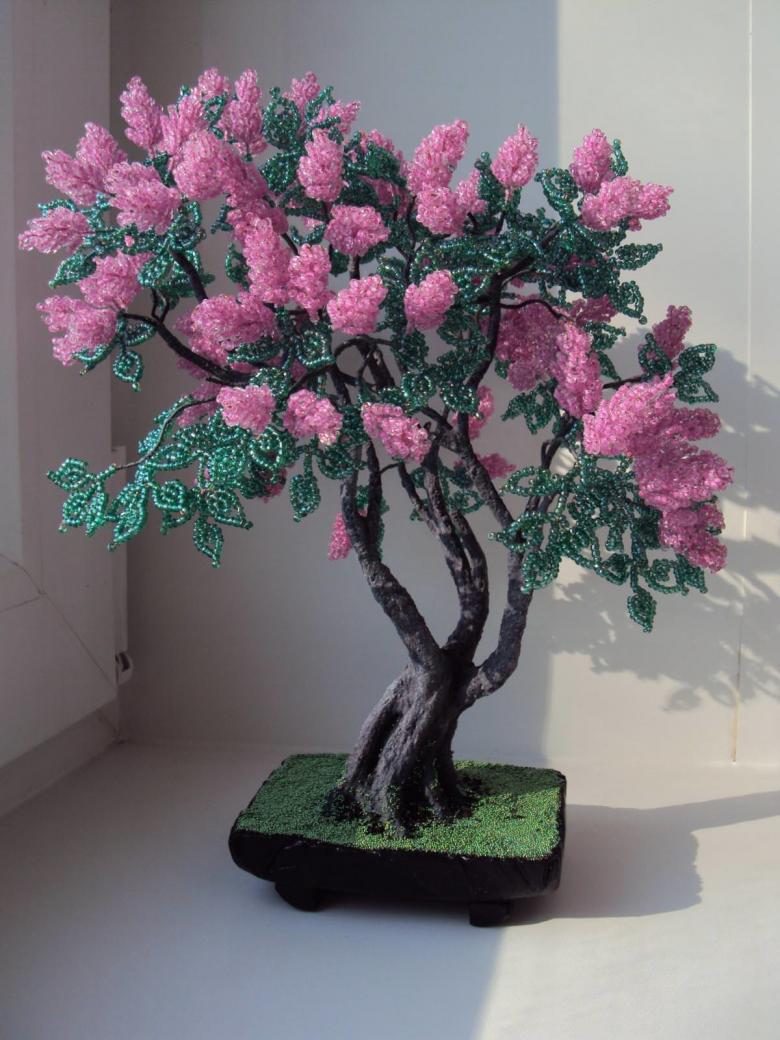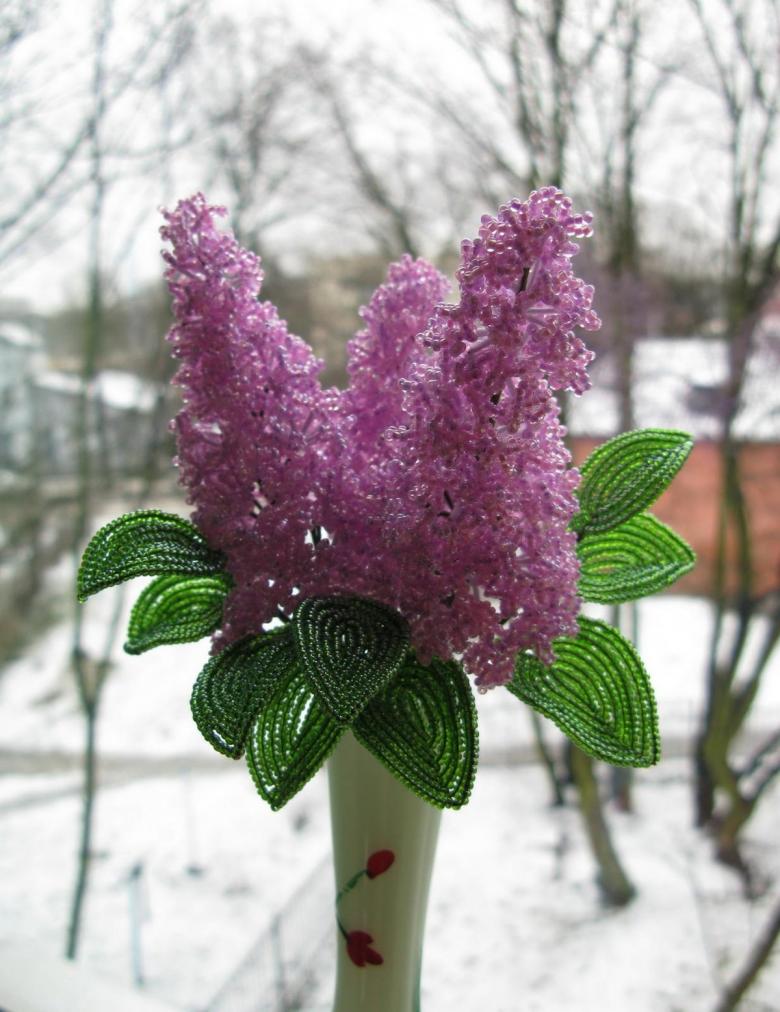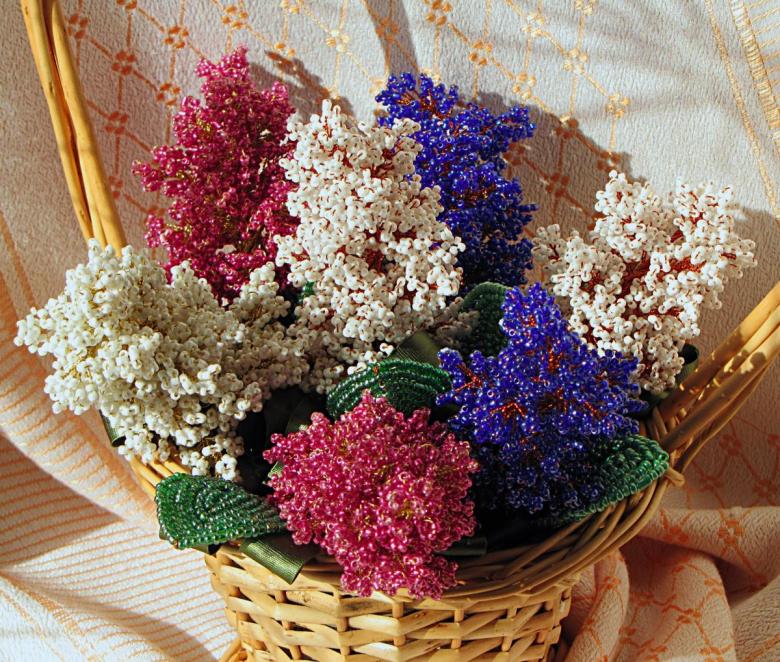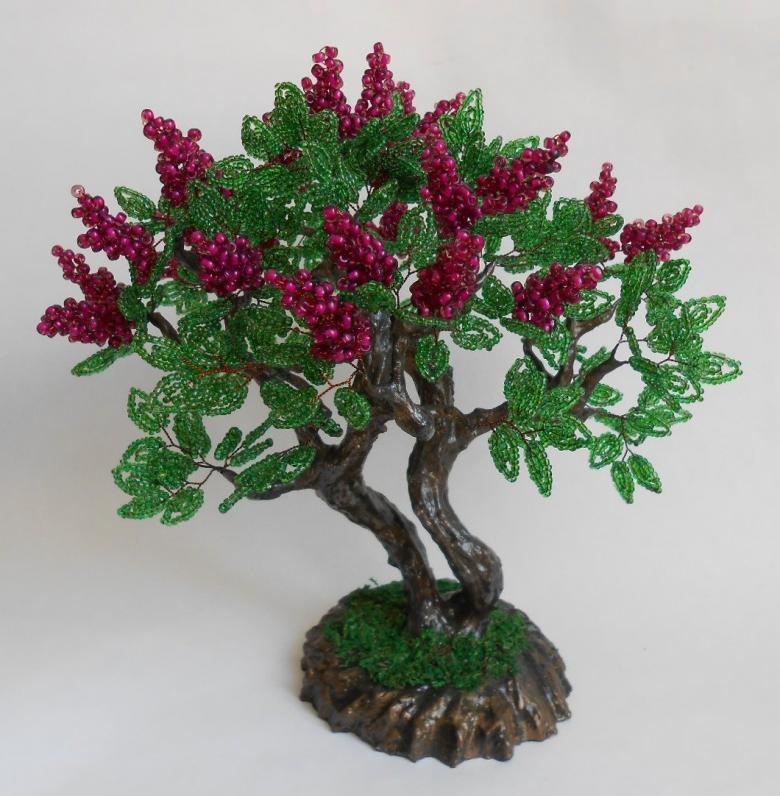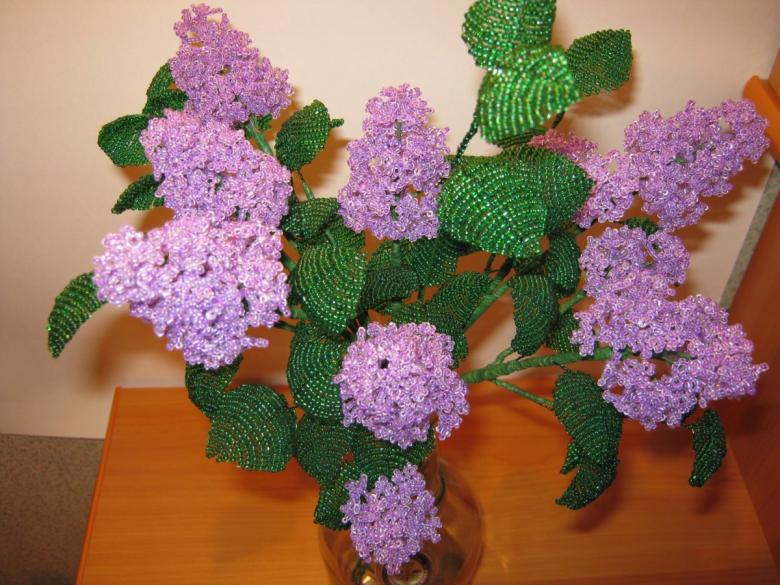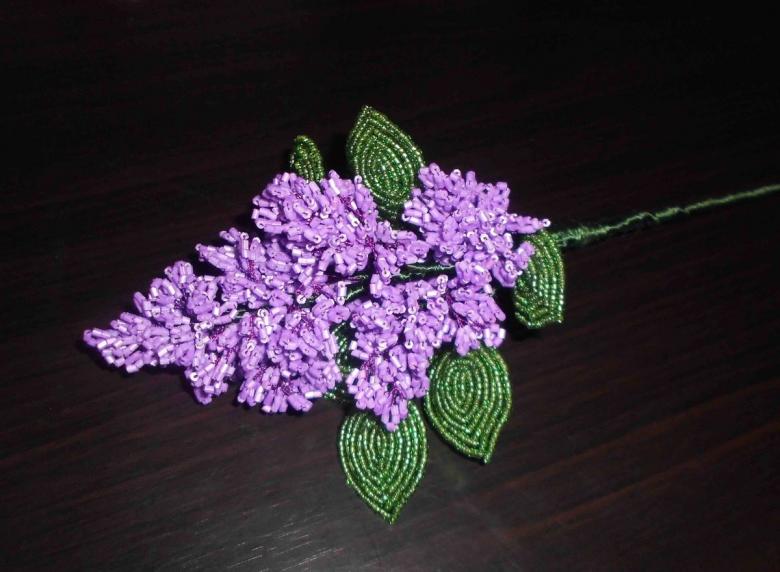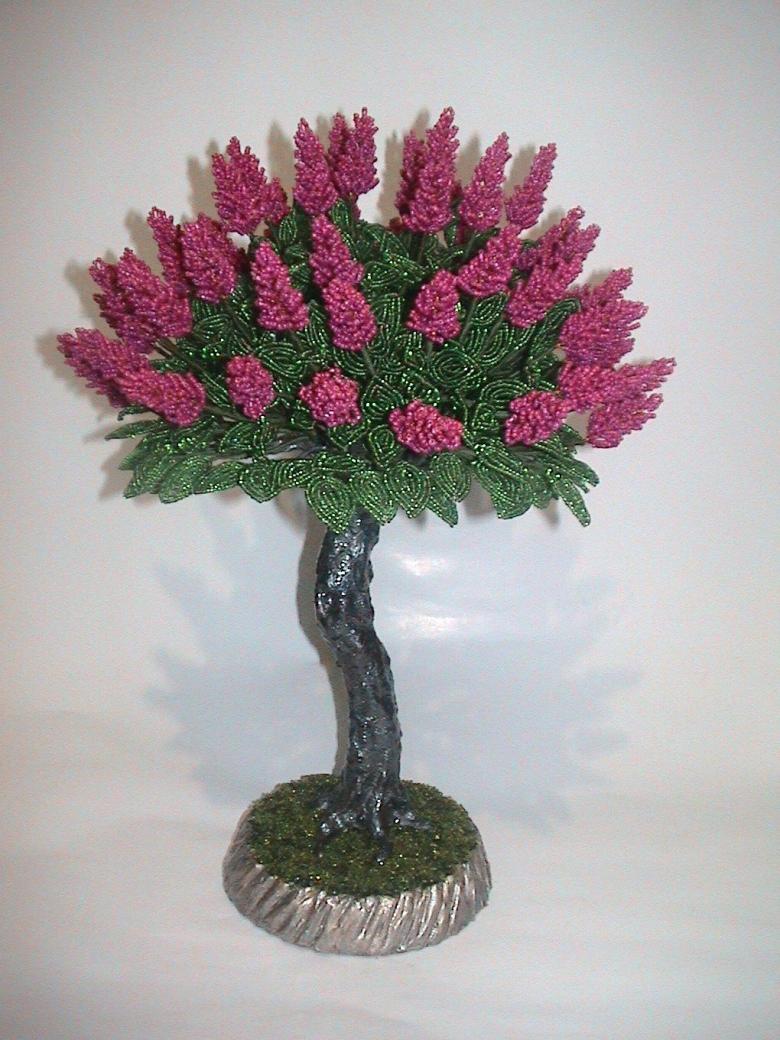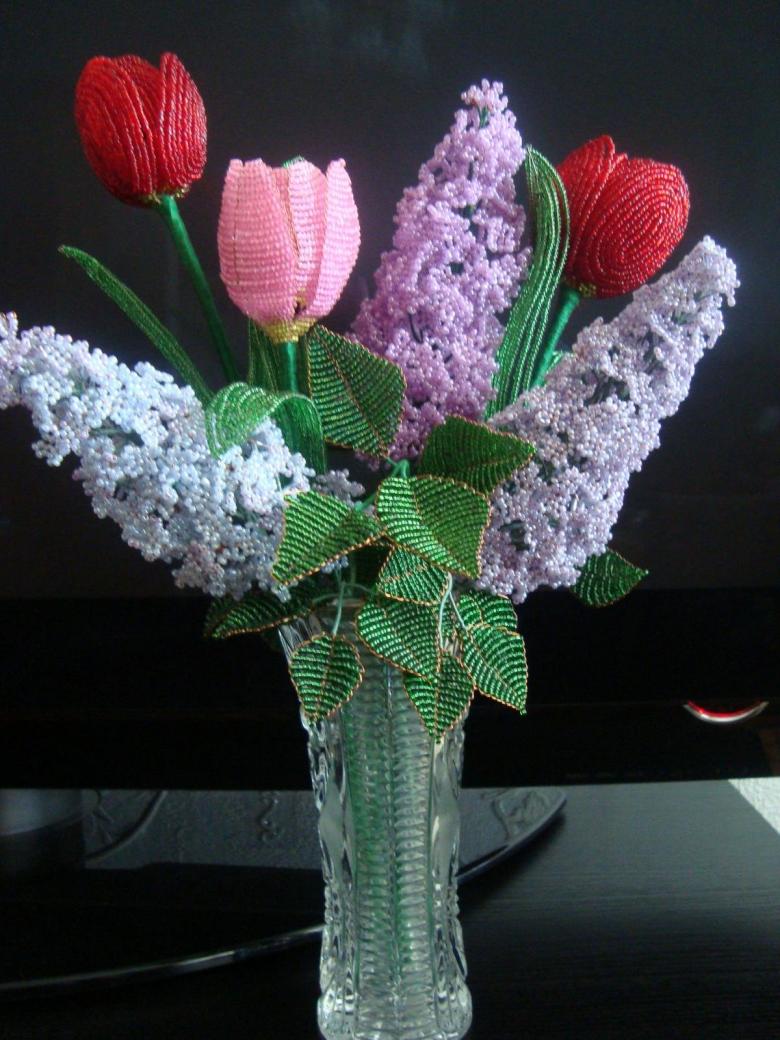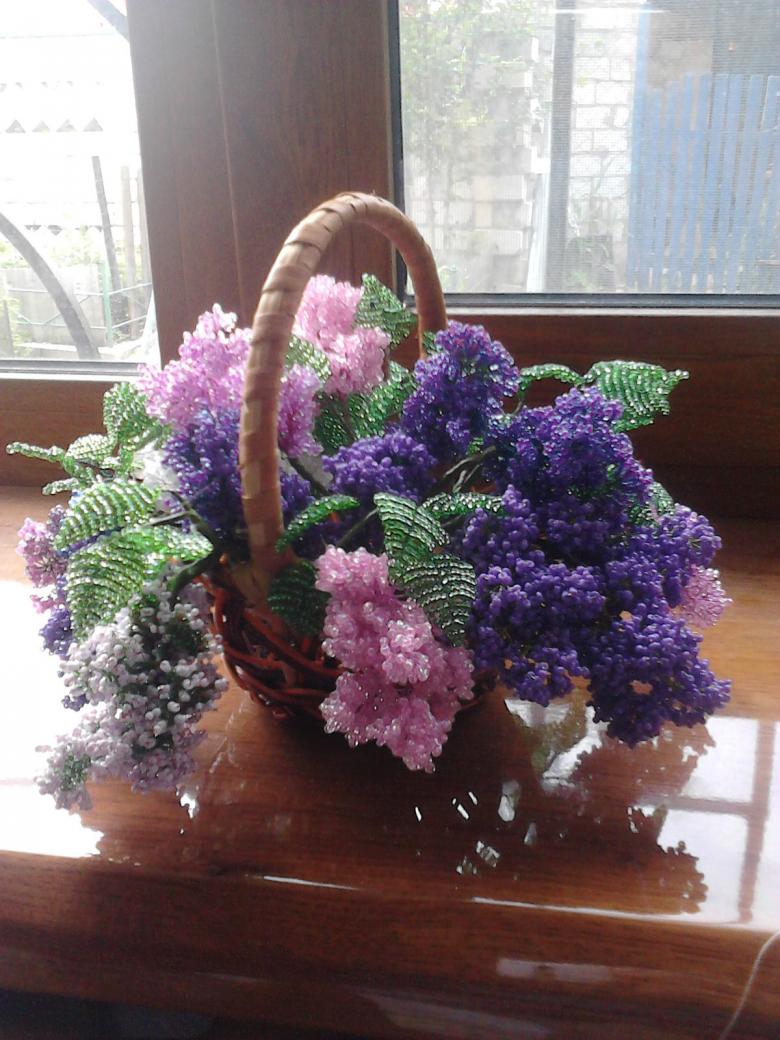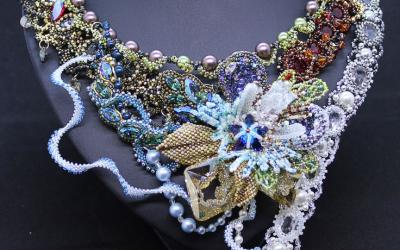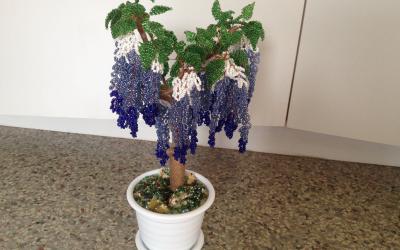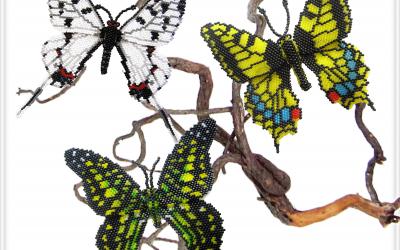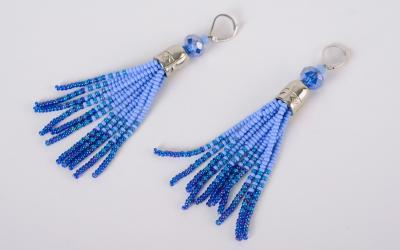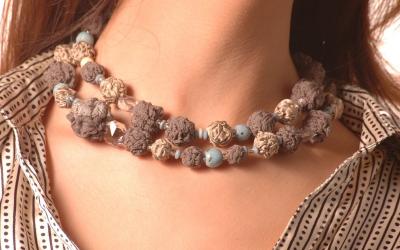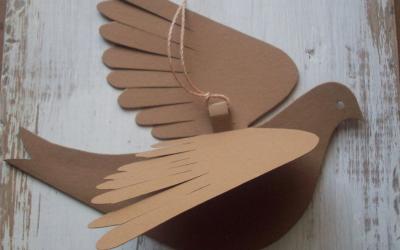How to create a lilac from beads (regular, embroidered or tree), materials and techniques, beautiful photo ideas
Creating flowers or whole bouquets from beads is a very fascinating activity. Work on the design of such a flower as a lilac can seem difficult, because you need to make a whole bunch of inflorescence, including a number of small parts, but it is not as difficult as it seems.
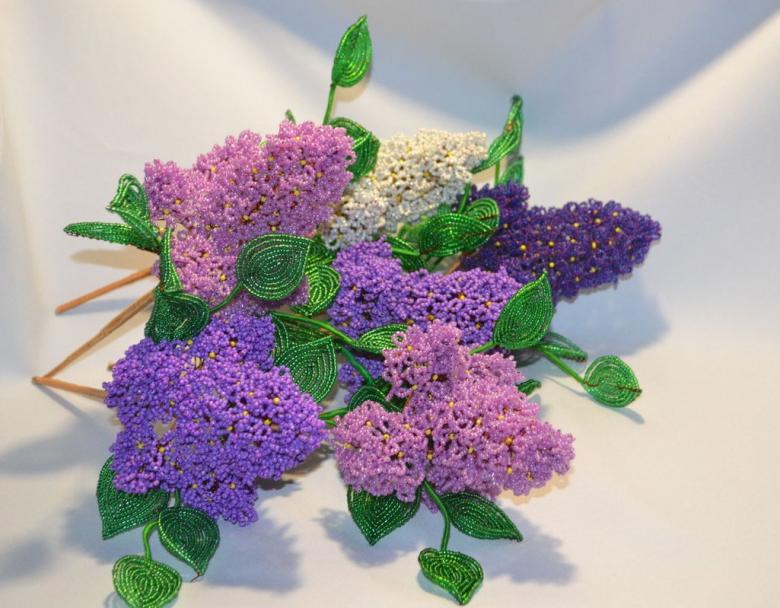
Such an activity, if you have patience, is accessible even to a beginner. And after all, a sprig of artificial flowers, "planted" in a beautiful vase, becomes a very effective element of interior decor.
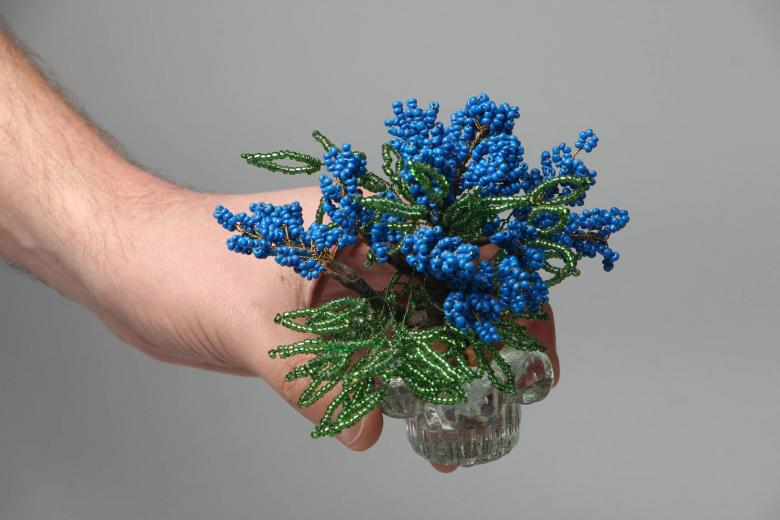
The workplace
Before any activity, care should be taken to provide a proper, comfortable, and safe place to work. The necessary conditions for a comfortable activity include consideration of the following points:
- the surface of the table should be light, this will facilitate the work with such small material as beads, and reduce the strain on the eyes;
- it is necessary to have good illumination;
- all material (beads, glass beads, beads, etc.) should be stored in bags or jars;
- for tools (cutters, scissors, needles) it is necessary to allocate the special box.
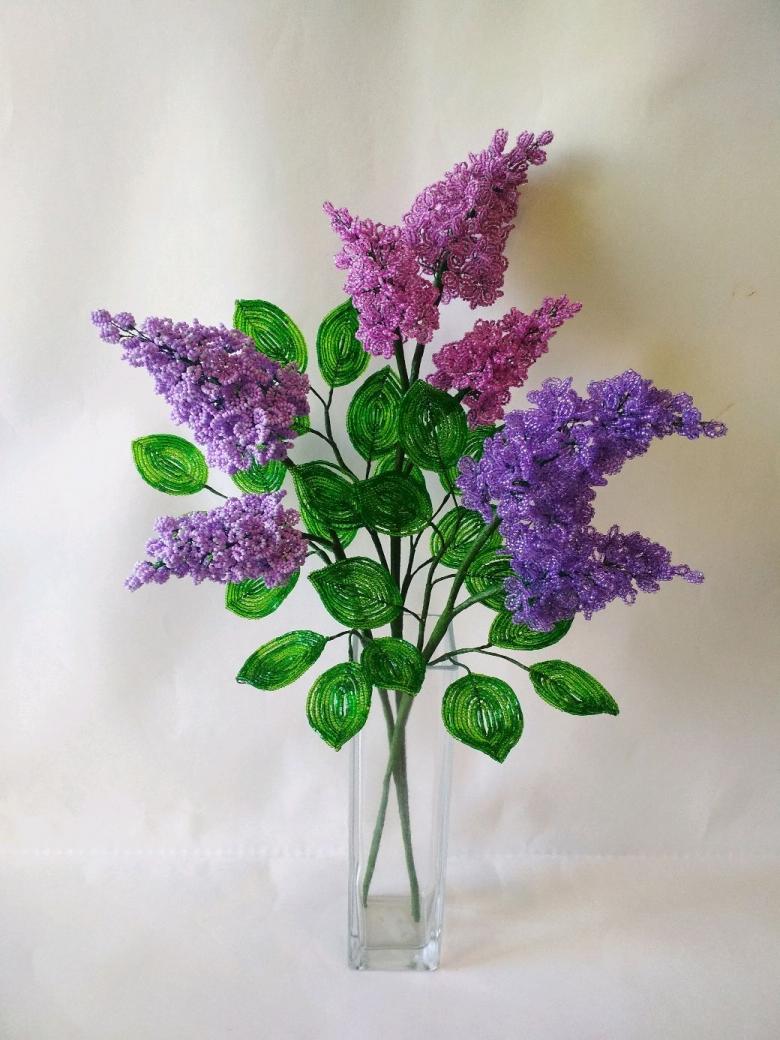
Do not forget about safety - on no account take needles, thread, wire or beads in the mouth!
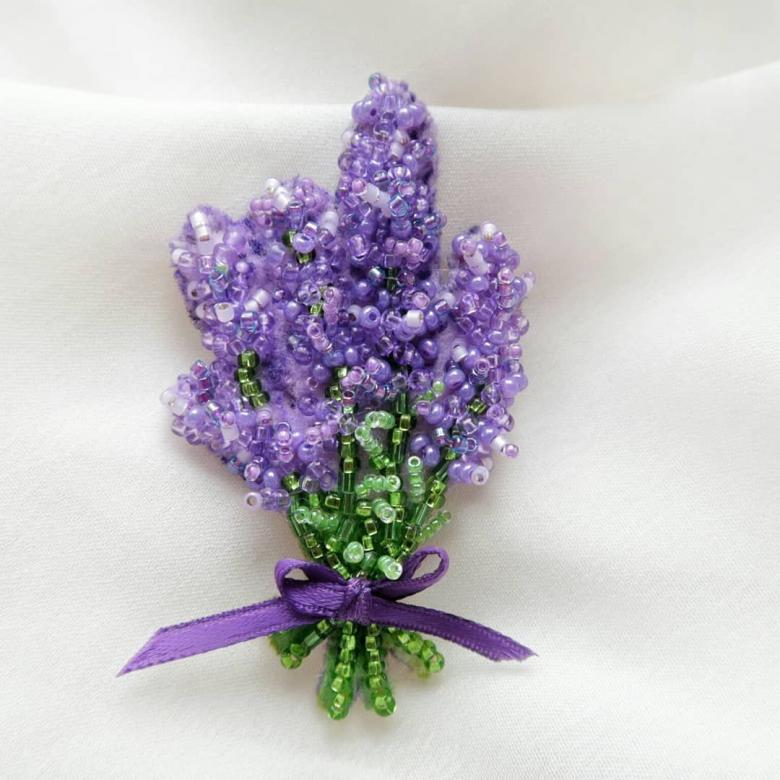
Beginners should see a master class with step-by-step photos, how to make a lilac from beads. This will make the whole process of work much easier and prevent possible mistakes.
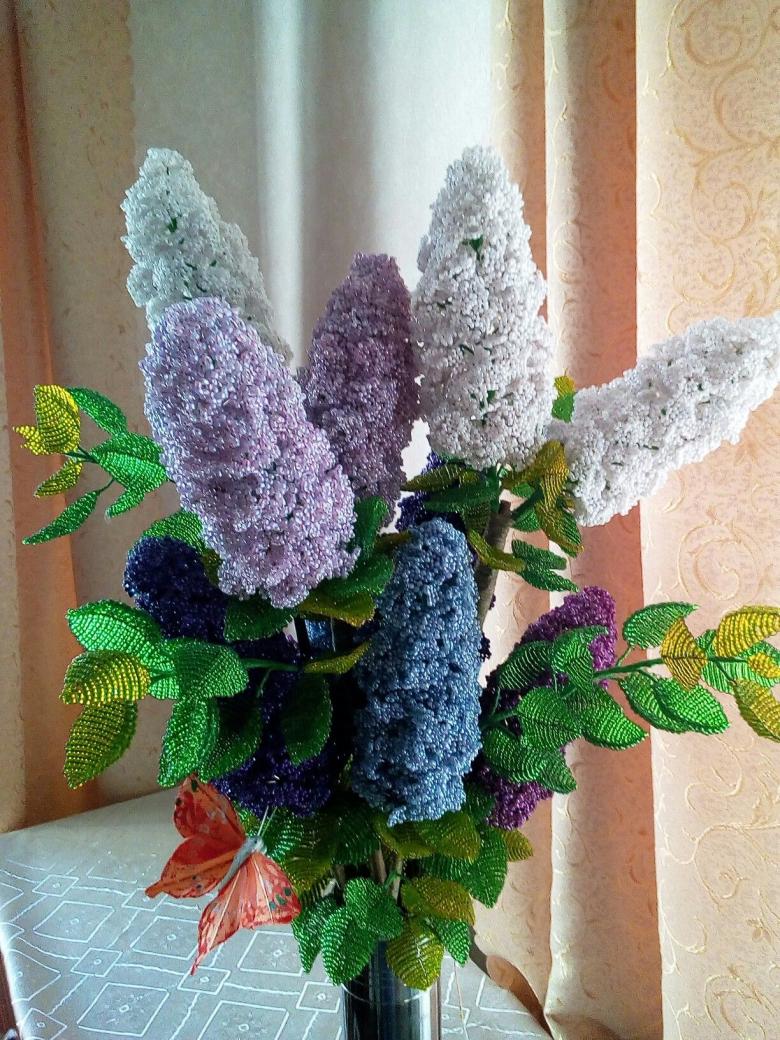
Materials
The quality of the product depends largely on what material is used in the work. It is better to buy Japanese or Czech beads, it is a little more expensive than Chinese, but much better quality than the latter. To make a bouquet will require:
- 50-70 grams of beads of white, pink, lilac shades. The proportion of color can be arbitrary;
- Five to six grams of yellow beads;
- lilac glass beads;
- Up to fifty grams of "smooth" material, which will be needed to decorate the leaves;
- 0.3mm wire for the flowers and 0.5mm for the leaves.
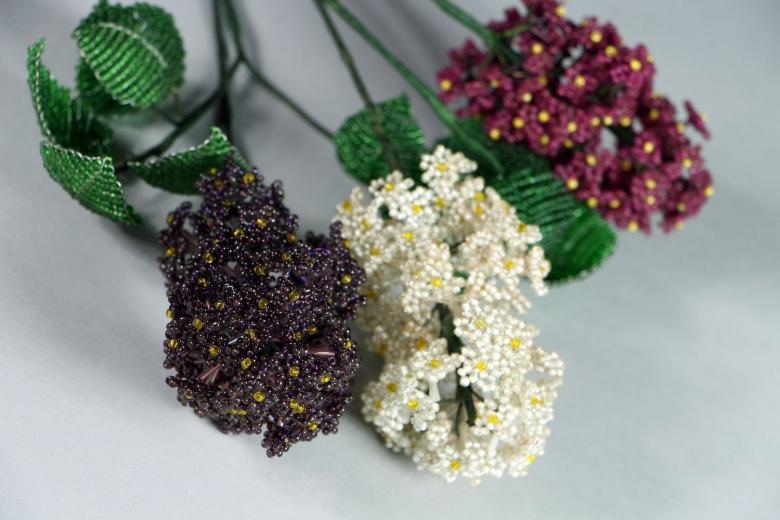
Tools
If you decide to take up weaving souvenirs from beads, you should buy a special device - a spinner. All other tools will be found at home:
- ruler;
- scissors;
- wire cutters;
- Green thread.
Having prepared the necessary materials and tools, you can begin the work.

Workflow
Start making a flower with the decoration of the bunch.
- Prepare a half-meter wire with a diameter of 0.3 millimeters.
- String five beads of lilac and make a loop.
- The same action is repeated two more times.
- After making three loops we get the first bunch.
- String on glass beads, forming a "leg" of lilacs and we get the first flower.
- Make a similar way of five or six flowers.
- Thread connect the "legs" flowers of lilacs.
- Treat in a similar way a couple of dozen flowers.
The end result is a lush bunches of lilacs.
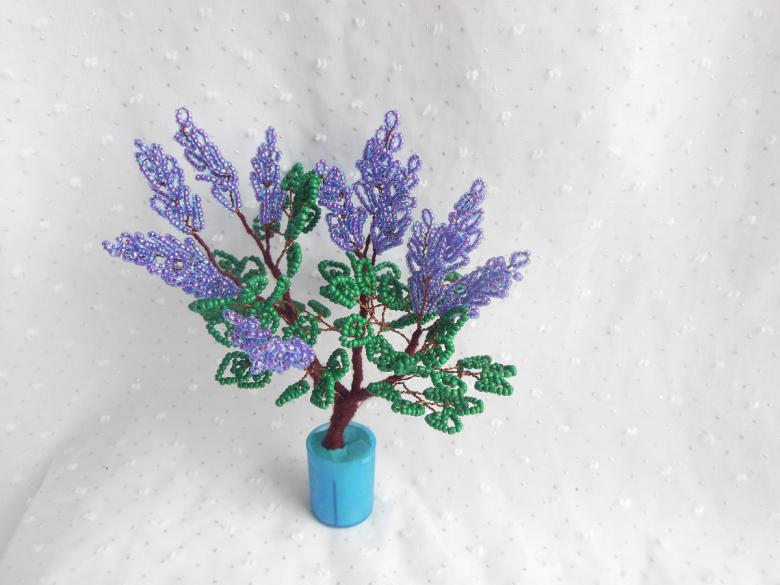
Making leaves
Continuing the work on making lilacs from beads with your own hands will be the design of leaves.
- The end of the piece of wire is fastened, and then strung the maximum number of beads, almost to the top of the workpiece.
- To the main wire is attached an additional piece, which is filled with green beads.
- Such "additives" is made 12-15 pieces.
- All the added pieces are twisted so as to have a plant leaf shape.
- More than a dozen leaves are made using a similar technology.
- Leaves are attached to the base of the "bunches".
Artificial lilac bush is ready, the only thing left is to place it in a prepared decorative container.
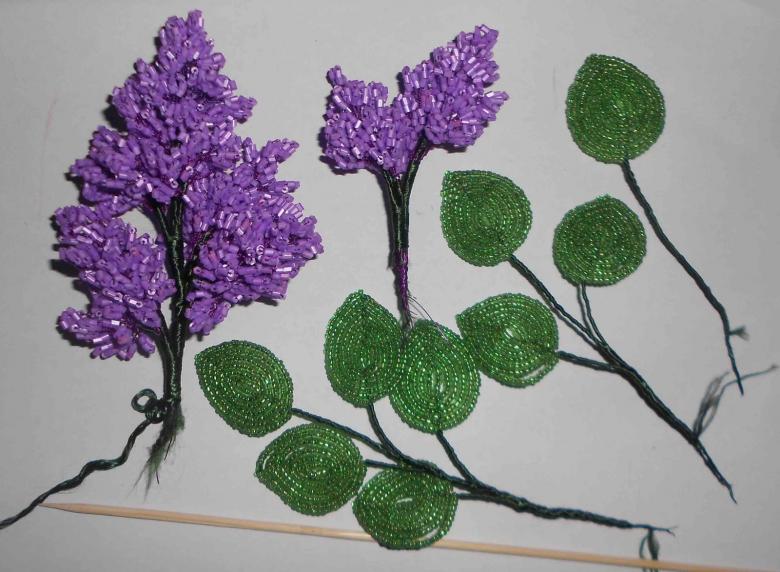
Stand for a tree
For such interior decoration, a small ceramic vase will work perfectly. You can fill it with diluted plaster or clay. This is a suitable material, to give stability to the entire composition.
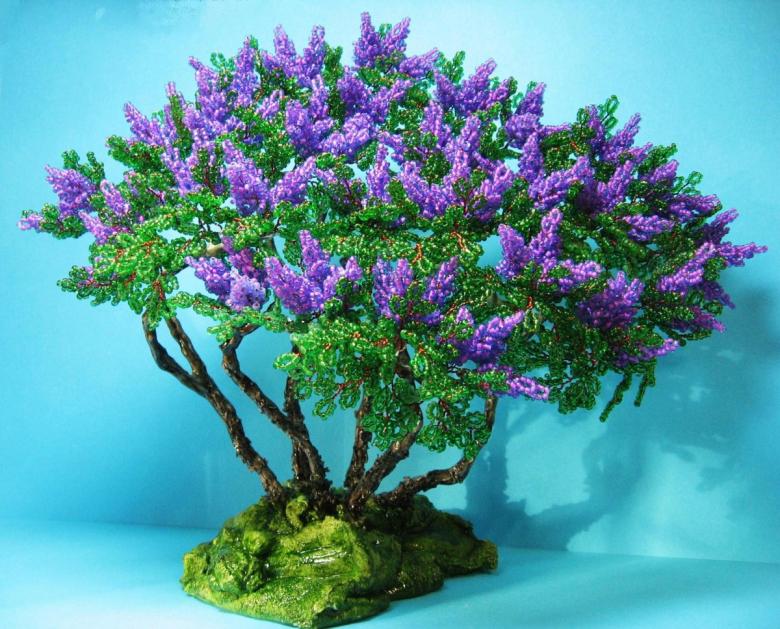
The container can be painted with paints, and then covered with colorless varnish.
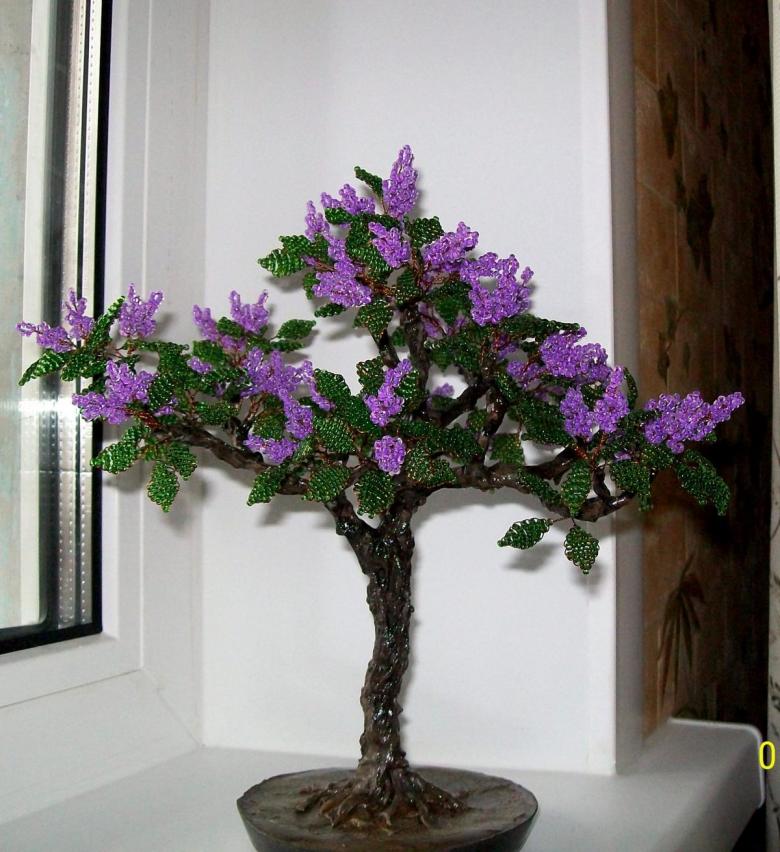
Another variant of the bouquet
For weaving will need:
- wire;
- glue;
- String for winding;
- beads;
- needle.
This version of the manufacture will be different from the previous one.
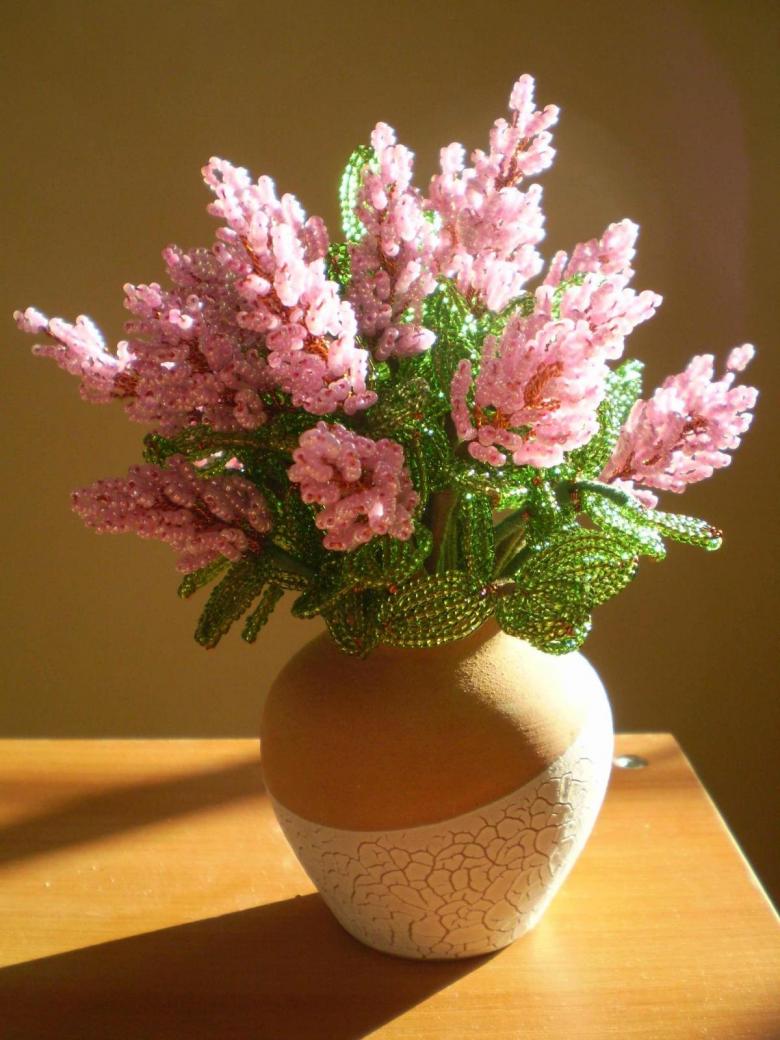
Stages of assembling a flower
- On a wire length of about 30 centimeters thread five beads.
- One end of the wire to pass through the first bead in the opposite direction, and do loop so that it is located in the center of the workpiece.
- String five more beads.
- Pass the end of the wire through the very first bead and tighten the loop.
- Do the same with the other end of the wire.
- After obtaining four loops, slightly bend the wire and twist it to get a kind of lilac bud.
- On the twisted lower part of the wire thread four beads and fasten them.
One piece of the future flower is ready. Need to prepare 78 similar blanks.
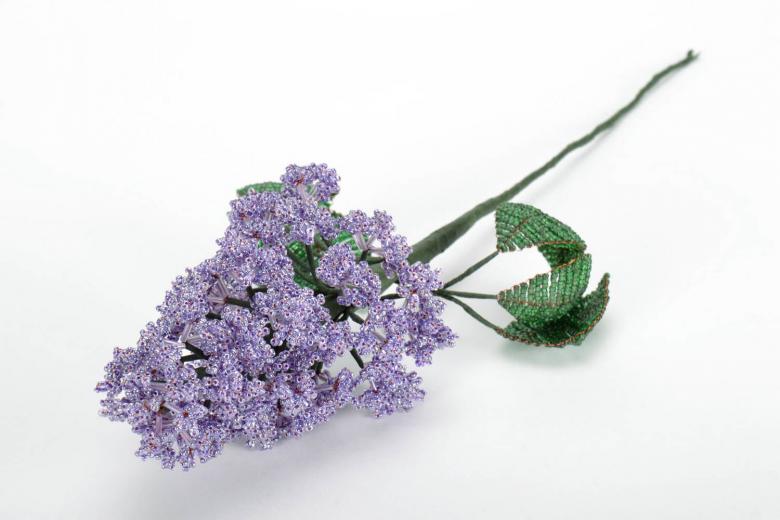
Assembling the inflorescences
Following the natural distribution of flowers on the branch of lilacs, connect six blanks, simply twisting them together. Thus we get an inflorescence.
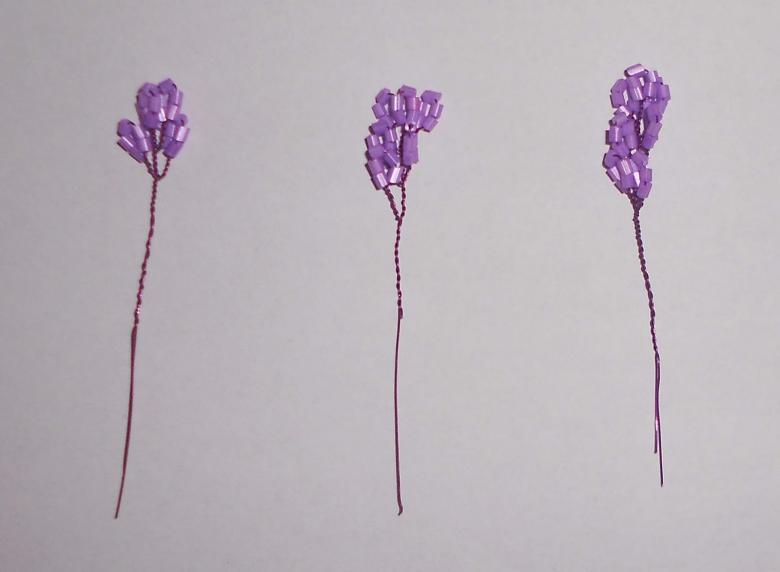
Of the available blanks collect thirteen inflorescences. Each twig is wrapped with green threads five centimeters downward, starting from the lilac petals. Apply glue on the threads, so they do not unravel.
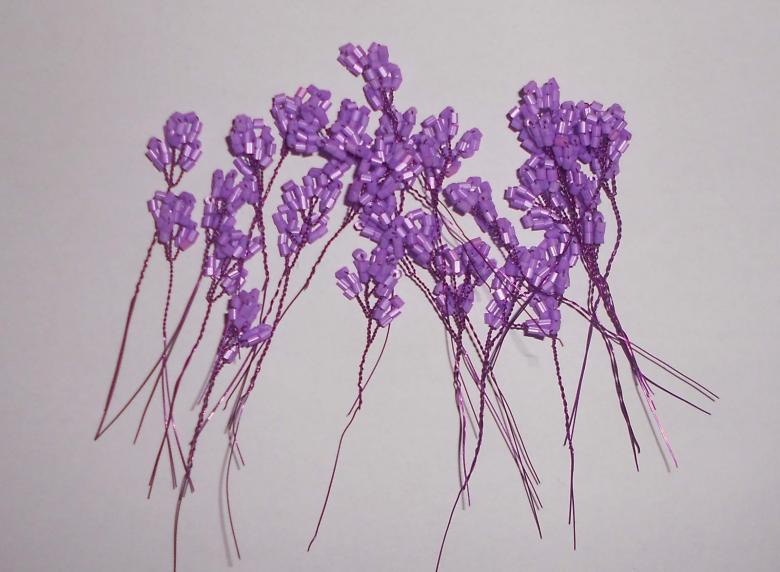
Assemble the bouquet
We take one inflorescence, four more are screwed to it a couple of centimeters below the central piece.
We apply glue and wind the resulting twig threads.
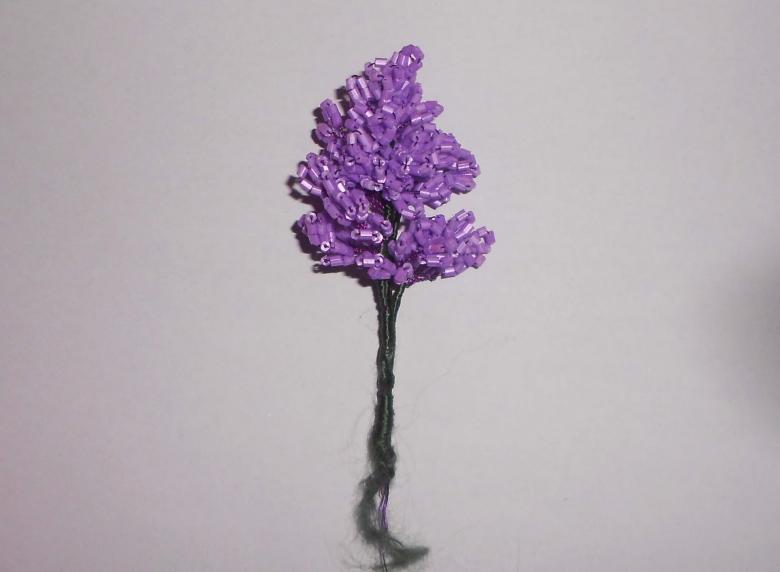
Next, below the first additional row, screw four more inflorescences. Wrap again with dark green threads.
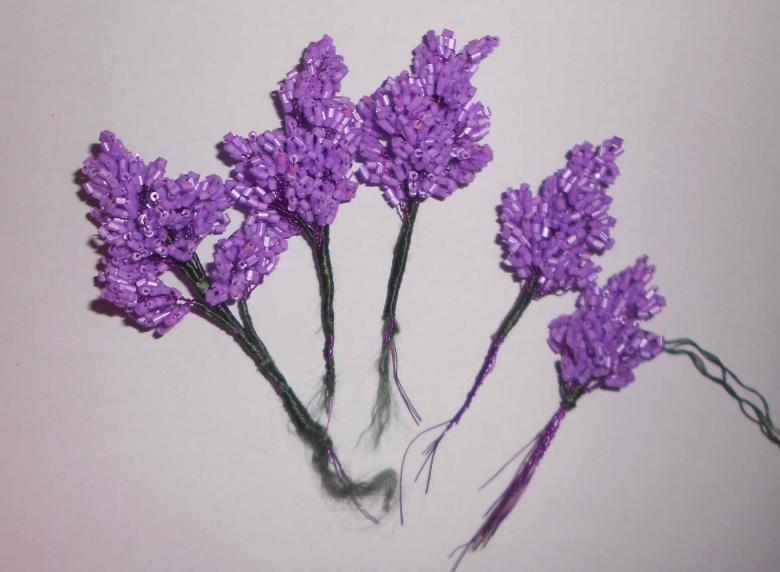
The last step is to attach the bouquet to the spoke. It is necessary so that the whole structure is held as strong as possible. The needle is hidden by winding threads on it.
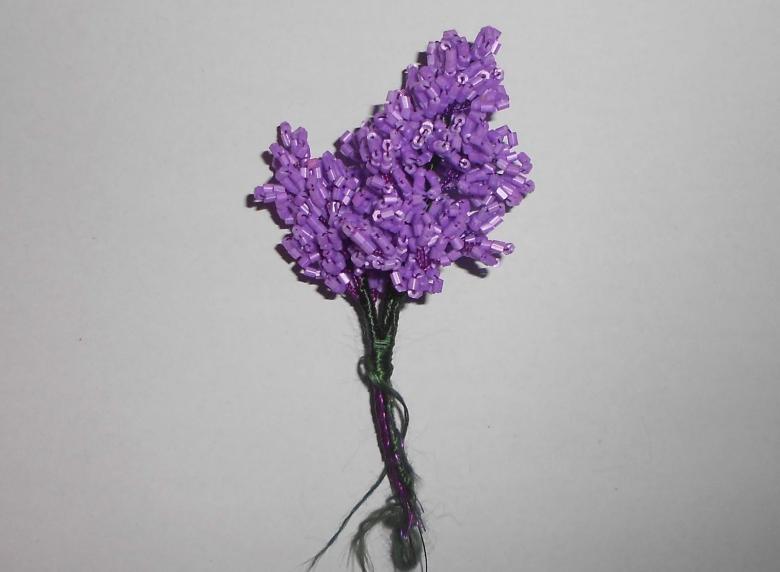
Making leaves
Consider what tips are given in the master class on making lilacs from beads. The decoration of leaves for the flower is very similar to the work on the manufacture of inflorescences.
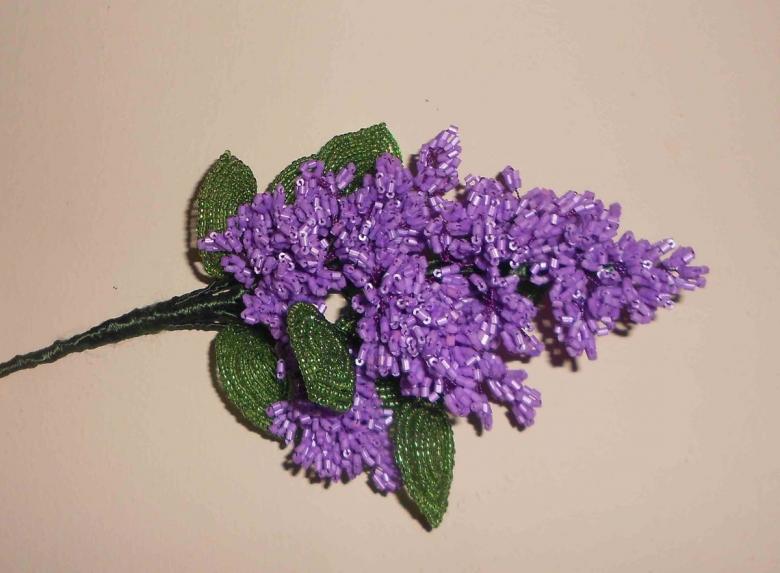
Step by step instructions
On a wire (length about forty centimeters) thread three green beads.
- The right end of the wire through the first two beads in the opposite direction, tighten the loop, so that the green basis is located in the center of the workpiece.
- Add three more beads on the right side and tighten the loop.
- Form the fourth row in the same way, having previously threaded 4 beads of beads onto the wire.
- The fifth, sixth and seventh rows are arranged in exactly the same way. Each row has as many beads as its serial number.
- For the next rows a different number of beads is used - for the eighth - six, for the ninth - five, for the 10th - three, and for the 11th - one.
Thus formed half of the future leaf.

Making the second half of the leaf begins with the holding and fixing the top of the workpiece of the other segment of wire.
Then perform the same operations as in the design of the first half, but in reverse order. The result is an elegant emerald leaf.
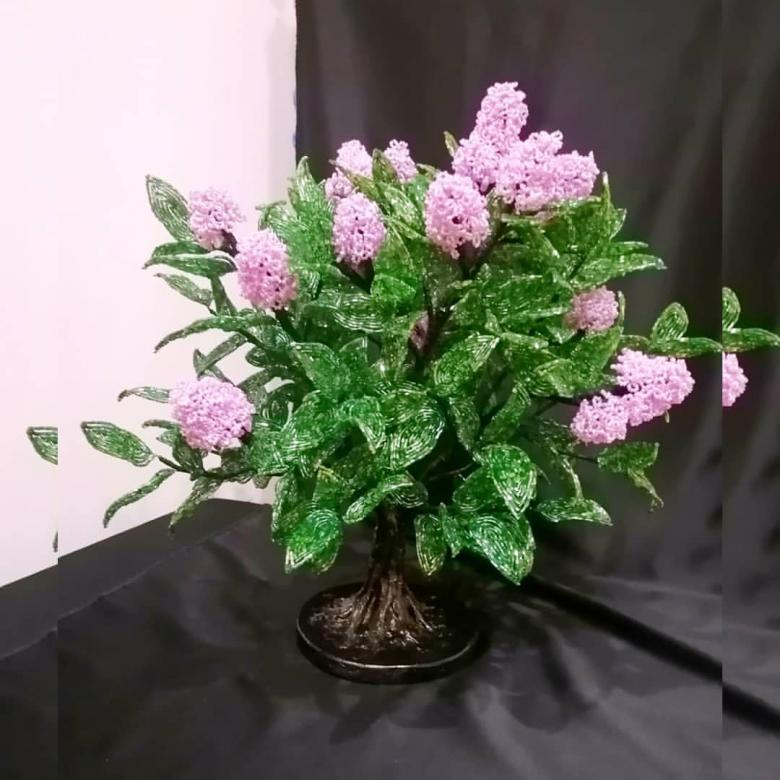
After weaving the desired number of leaves, twist them together to make a twig. The best option - five or six leaves on the sprig.
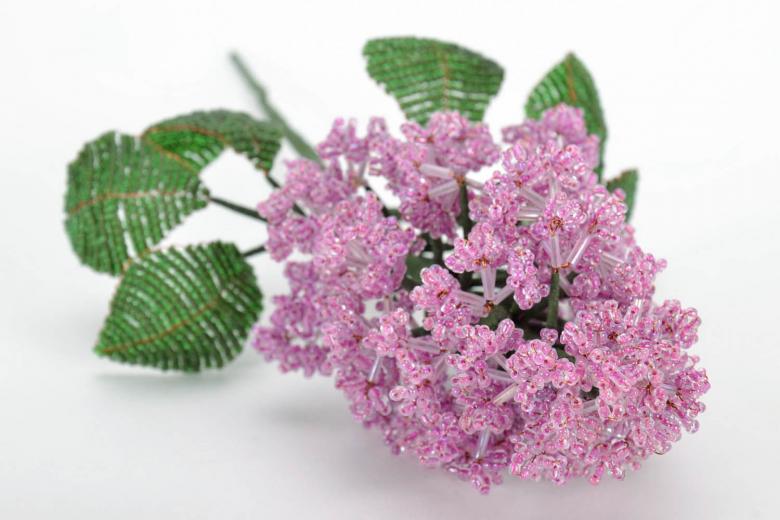
It remains to connect the bouquet of lilacs and a twig with leaves.

